Stories and Updates
Embracing the world's faiths in indianapolis: Islam
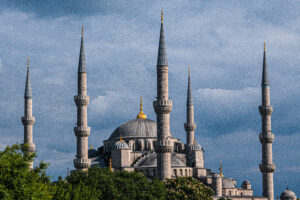
On Brotherhood: Narrated by Anas bin Malik (RA): The Prophet (PBUH) said:” None of you will have faith till he wishes for his (Muslim) brother what he likes for himself.” (Salih Muslim, Book 1, Hadith 151)
Islam is the world’s fastest-growing faith, second only in popularity to Christianity. Its adherents are called Muslims. Islam, as revealed to the prophet Muhammad (PBUH), is the most recent of the three great monotheistic religions and is often the least understood by outsiders. In essence, Islam is rooted in submission to the will of God, who, in its sacred text – the Qur’an – is referred to as “Allah”, the true and eternal words of God.
Muhammad (PBUH) was born in 570 CE in Mecca, now part of modern-day Saudi Arabia. He was spiritually curious and began to meditate at Hira, a mountain near Mecca. In 610 CE, he experienced a divine revelation; God’s messenger Jibril (the archangel Gabriel) commanded him to proclaim that Allah was the supreme God. Muhammad (PBUH) then found himself speaking the words of God. These revelations continued for 23 years. Although he was illiterate, Muhammad (PBUH) committed them all to memory.
The Prophet Muhammad’s (PBUH) companions immediately wrote down the revelations upon receiving them. After the Prophet’s death, these writings were compiled into a single manuscript by Zaid bin Thabit (RA) under the direction of Caliph Abu Bakr (RA), and the standardized version was finalized during Caliph Uthman ibn Affan’s (RA) tenure.
Muhammad (PBUH) shared his vision with the people of Mecca and gradually gained followers. However, they then encountered persecution and fled to the city of Medina about 200 miles away. His growing power was challenged by a large army from Mecca, which he decisively defeated in 630 CE. Through persistent efforts, he eradicated polytheism and idol worship, thereby establishing monotheism. He passed away two years later after a short illness.
According to tradition, Muhammad (PBUH) experienced a mystical journey known as Isra and Mi’raj. During this journey, he traveled on a miraculous steed called Buraq to Jerusalem and then ascended to the heavens, where he met prophets including Abraham (Ibrahim), Moses (Musa), and Jesus (Isa). Muslims believe that their faith has always existed, with earlier prophets such as Moses and Jesus serving as forerunners to Muhammad (PBUH).
The spread of Islam was the result of many factors, including military expansion, trade networks, missionary efforts, and intermarriage. Today, most people in North and West Africa, the Middle East, and Indonesia are Muslims. There are also sizeable Muslim communities in many European countries and the USA.
The Qur’an is the central religious text of Islam. Its words are believed to be the words of God himself; because of this, Muslims read the text of the Qur’an in the original Arabic, the language in which it was revealed to Muhammad (PBUH). Its text is divided into 114 suras (chapters). Its main message is that Muslims must believe in One God and put him first, even over one’s own self.
Within the Qur’an, there are commands to uphold justice. Islam categorizes duties into two realms; fulfilling Allah’s rights through acts like prayer, fasting, belief in his Oneness, and pilgrimage, and fulfilling peoples’ rights regardless of their background. Transgressions against either are considered sins in Islam. The Qur’an underscores that while Allah may pardon offenses against Himself, forgiveness for offenses against others hinges on obtaining their forgiveness.
In Islam, after the Qur’an, the most authoritative source is the Hadith, which are the teachings and sayings of Prophet Muhammad (PBUH). Notably, Prophet Muhammad did not personally compile any Hadith collections. The first written compilation of Hadith occurred 80 years after his death by an Imam, allowing for varying interpretations and the critical assessment of Hadith based on their authenticity.
Allah is the only God in Islam. He is believed to be eternal and in control of the entire universe. This belief illuminates all aspects of Muslim life, from birth until death and from the mosque to the workplace. Muslims aim to dedicate all their actions to God, whether related to financial affairs, caring for other members of their community, or their political beliefs. As a result, Muslims often introduce God whenever they are talking about anything important. For example, before making a promise, Muslims commonly say “inshallah”, meaning “God willing.”, or express gratitude with “Alhamdulillah”, meaning “All praise is due to Allah.” This integration underscores the inseparability of religious principles from both public and private spheres of life.
Muhammad (PBUH) did not appoint a successor during his lifetime. Upon his passing, leadership transitioned to those close to him., known as Caliphs: Abu Bakr, ‘Umar, ‘Uthman, and ‘Ali. Over time, two main branches of Islam emerged: Sunni and Shiite. The Shiite branch originated from a disagreement over the succession of leadership, with Shiite Muslims believing that Ali should have been the immediate successor. While this schism began as a political dispute, it later encompassed theological differences regarding authority and interpretation of Islamic teachings. Over time, Sunni and Shiite Muslims developed distinct religious practices and legal traditions.
Sunni Islam, comprising about 85-90% of Muslims worldwide, follows Abu Bakr and the Sunnah, which are Prophet Muhammad’s teachings. Shia Islam, representing about 10-15% globally, emphasizes ‘Ali and his eleven successors as spiritual leaders (Imams). Sunni Muslims are prevalent in Saudi Arabia, Pakistan, Indonesia, and northern Africa, while Shia Muslims constitute the majority in Iran, Iraq, and Bahrain.
Shari’ah law refers to the legal system derived from Islamic religious precepts, primarily based on the Qur’an and the Hadith. Shari’ah (which translates to “path to water”) guides Muslims on religious practices, personal conduct such as dietary restrictions and modest dress, family law, criminal law including punishment for certain offenses, and financial practices. The application of Shari’ah law can vary considerably among different Muslim communities and countries, particularly concerning criminal matters.
While various sins are mentioned in the Qur’an, hypocrisy (Munafiq) is regarded as one of the gravest sins. The Qur’an devotes an entire chapter entitled “Al-Munafiqun (The Hypocrites) to address this issue. Hypocrisy is condemned because it involves insincerity and deception in one’s faith and actions, which undermines the essence of true belief and sincerity in Islam.
The cornerstone practices of Islam are encapsulated in the Five Pillars. The first Pillar is the “shahadah” (declaration of faith): “I bear witness that there is no god but God and Muhammad (PBUH) is his Messenger.” The second pillar involves daily prayers performed five times at prescribed intervals, with congregational prayers on Fridays at mosques, oriented by a niche (mihrab) indicating the direction of Mecca. The third Pillar is “zakat”, a form of charity aimed at supporting the less fortunate. The fourth Pillar,“sawm”, entails fasting during Ramadan, the month of revelation of the Qur’an to Muhammad (PBUH). Finally, the fifth Pillar is the “hajj”, a pilgrimage to Mecca required of every physically and financially capable Muslim.
Despite theological and legal differences, Sunni and Shia Islam share these fundamental core practices of Islam.
Among the most well-known mosques in the Indianapolis area are the Islamic Center of Indianapolis – Masjid al Fajr (www.imcaonline.org), the Alhuda Islamic Center of Indiana (www.alhudafoundation.org), and the Islamic Society of North America Mosque (www.isna.net). All of these centers offer opportunities to learn more about the Islamic faith.
Written by Freddie Kelvin, co-written by Nabiha Mahmood
Reflections on Passover
Passover. 2025.
On the Hebrew calendar, each and every year, Passover begins on the fifteenth day of the month of Nisan. Currently, the year is 5785. On our English calendar, this corresponds to sundown on April 12th, 2025. Passover ends at sundown on April 20th (Nisan 22). Passover and Easter are both springtime celebrations, which creates a nice opportunity to think about how similar these traditions are. Redemption and hope are themes shared at both Passover and Easter, and we will all be called on to celebrate, observe, pray, and share with our families and friends.
Families gather on the first night for the Seder meal. Seder translates to the word order, as in seder meals worldwide, Jewish people follow the same 14 parts in the same prescribed order, just as our ancestors did in times past. We read from the Hagaddah, which translates to the word telling, as the Torah commands us to tell this story to our children and grandchildren, just as our parents and grandparents did in times past.
As we gather together, the leader has in front of him/her the Seder plate. On the Seder plate, we have:
- The Pesach. A roasted bone, symbolic of the special lamb brought to the Temple as an offering to God.
- Moror. Bitter Herbs. Symbolic of the bitterness of slavery.
- Charoses. A combination of apples, cinnamon, nuts, and wine. Symbolic of the clay used by the slaves to make bricks for the Pharaoh.
- Beitsa. An egg. Symbolic of continuity of life, for there is no beginning and no end.
- Karpas. Parsley. Symbolic of new life and a feeling of hope, as Passover occurs in the spring.
- Wine. We drink four times, symbolic of God’s four promises of freedom.
- Salt water. Symbolic of sad, bitter tears shed by the slaves of ancient Egypt, as well as those who are not free today.
- Matzoh. Unleavened bread. As the Jewish people fled Egypt, there was no time for bread to rise.
- Elijah’s Cup. The prophet Elijah is invited to enter all homes during the Seder meal.
At Passover, we tell the story of our redemption from slavery. Moses, whose name means “drew him out of the water,” was saved from the Nile River by Pharaoh’s daughter and raised as the Pharaoh’s grandson. As he grew, and as the Jewish people were enslaved, God told Moses to go to the Pharaoh and say, “Let my people go.” When Pharaoh refused, God punished Egypt with ten plagues, the last being the death of firstborn sons. Jewish people marked their doorposts with the blood from a sacrificed lamb, a sign that the angel of death should Pass Over their homes and spare their first-born sons. Because of these plagues, Pharaoh told the Jewish people they could leave, and in their haste, they did not have time to leaven the dough. When they reached the Red Sea, Pharaoh changed his mind and demanded his army secure their return to slavery. Through God, Moses parted the Red Sea, allowing the Jewish people into freedom.
Passover celebrates this liberation from slavery into freedom. We celebrate this history and re-tell this story as the Torah commands. We both remember and observe. We invite family, friends, and even strangers into our home, as we are told, “let those who are hungry come and eat.”
Alan Bercovitz
Meet IEC Member, William
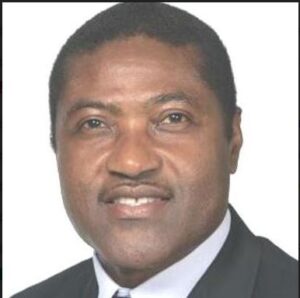 William Agbor Baiyee knows why he is here on Earth. He says, with his characteristic intelligent serenity: “It’s part of my spirit to help the world get better, to help young people develop…they are the promise of tomorrow.”
William Agbor Baiyee knows why he is here on Earth. He says, with his characteristic intelligent serenity: “It’s part of my spirit to help the world get better, to help young people develop…they are the promise of tomorrow.”
William’s mission for youth uplift and education takes at least three intriguing forms: he’s a science teacher at Arsenal Technical High School; executive chairman of the African University Foundation; and he’s a CIC Interfaith Enrichment Corps member serving Felege Hiywot Center (FHC), an an employment based Science, Technology, Engineering, Arts, and Mathematics (STEAM) Agriculture program rooted in Ethiopian heritage that engages youth in urban farming and environmental justice.
William found his own direction early on, through faith. As a high school student in rural Bambili, Cameroon, he served as secretary for the Bambili Baptist Church, and did lots of ecumenical work. “Outreach is the basis of building understanding, peace, engagement, renewal, and restoration,” he says.
“I learned that outreach starts within. When there are trials, you have to make adjustments, and be intentional about not staying in a place of bitterness or anger.” We are naturally driven to create walls and self-protect. “But we have to preserve the capacity to remain elastic, to want to learn in spite of failure…and a readiness to do this doesn’t happen on its own.”
In his science classroom, William uses a dual dynamic of challenging students and offering support at the same time. “I want to help students achieve beyond what anyone might expect them to achieve, to challenge them to rise, even from a place of comfort,” he says. This creates a degree of dissonance that leads to resilience and learning.
But William’s philosophy goes beyond achievement for achievement’s sake. “The idea is to help youth see how to use their talents, and to create an environment where they are reflective of their experiences and begin to see mirrors of each other.”
At the Felege Hiywot Center (FHC), William is happy to help in any way needed [“Felege Hiywot” means “looking for direction in life”]. Founded by Ethiopian-born Aster Bekele, FHC is an employment based STEAM Agriculture program, life learning space, and long-time partner of the Center for Interfaith Cooperation. William was thrilled to be placed there. “It’s fascinating to see how well-run it is, how there is an environment for thriving. If you create the right environment, human beings will respect and learn from each other.”
At Felege Hiywot, he supports the youth in their service to others. Over the holidays, the youth made cookies and greeting cards for folks at a senior center. At the Edna Martin Center, they helped package 500 meals in two hours. To promote well-being, students also learned about nutrition. “The net effect is that learners can adopt an identity and learn the lessons of life,” says William. It comes back to the theme of his life mission: “Helping disadvantaged kids find communities of learning … it’s a challenge that I embrace.” he says.
William is working on his own innovative, ambitious ideas in that realm of incubation and will be unveiled in the near future. But as with all his efforts, there is an element of benevolent volition and intentionalism for peacemaking, growing, learning. These days, he’s very clear about his need for excellence and a desire to “walk with youth” in the second phase of his life; after years working as an administrator and faculty at Rosalind Franklin University Chicago Medical School of Rosalind Franklin University, Case Western Reserve School of Medicine, and Indiana University School of Medicine, he was ready forge a new path forward. With degrees in cellular and molecular biology, science education, public affairs, and a doctorate in philosophy, William returned to school in 2023, to Marian University, where he is set to earn a Master of Arts in Teaching by the end of 2025.
As he describes his journey, he beams, always returning to the themes of integrity, creativity, excellence. “I bring to the work faith also. Faith shows up in what you do and say,” he says.
How did he come to this perspective, this North Star? “I grew up in a family where genders were equal,” he recounts. “This taught me to avoid creating mindsets that result in barriers and practices that diminish others and uplift some. That is the challenge of culture. And culture is of human making. We can choose or choose not to respect and uphold the dignity of all humanity.”
In his work leading the African University initiative in Cameroon, William and his fellow board members put these principles into action. At present, the emerging institution in his home village of Tali will soon have its first multipurpose building and an agricultural park, thanks to a community-university partnership. Helping the women of the village learn snail farming is a key project. Nutritious, and easier to cultivate than larger livestock, snail farming, he says, is a tool for female empowerment. The youth are also involved in practical projects in the Agricultural Park.
With initiatives like these, William answers his own question: “How can we impact more lives, or the world? In a new way? Experience grants wisdom. How can you create a platform, not wait for it to be given to you?”
I ask William what he hopes to gain and to give from the IEC this year. “The fruits of learning and service,” he says, poetically. “I am available for both. I see myself in CIC’s mission of pursuing peace and understanding.”
From his vocation as a science educator, to his entrepreneurial work in Cameroon, to his support of youth through the Interfaith Enrichment Corps, William Agbor Baiyee is full of focused grace. “I find a lot of pleasure in curating the process from an idea to action and tangible outcomes,” he says. “This is the wellspring of the notion of faith.”
Strength to Love: Dr. King’s Vision Through the Lens of Ahimsa
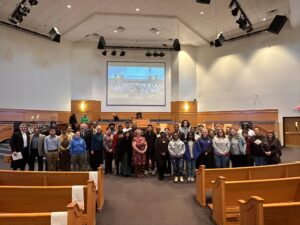 The theme of 56th Dr. Martin Luther King Jr birthday celebration service at St. John Missionary Baptist Church in Indianapolis, “Strength to Love” highlighted the powerful connection between Dr. King’s message of nonviolence and compassion and the Hindu principle of Ahimsa. I was honored to be invited by the Center for Interfaith Cooperation (CIC) and the Indianapolis Christian Leadership Conference (ICLC) to give a faith reflection. Dr. King’s advocacy for nonviolent resistance aligns with Ahimsa, which not only calls for refraining from physical violence, but also requires an active commitment to compassion, understanding, and love—even toward those who oppose us.
The theme of 56th Dr. Martin Luther King Jr birthday celebration service at St. John Missionary Baptist Church in Indianapolis, “Strength to Love” highlighted the powerful connection between Dr. King’s message of nonviolence and compassion and the Hindu principle of Ahimsa. I was honored to be invited by the Center for Interfaith Cooperation (CIC) and the Indianapolis Christian Leadership Conference (ICLC) to give a faith reflection. Dr. King’s advocacy for nonviolent resistance aligns with Ahimsa, which not only calls for refraining from physical violence, but also requires an active commitment to compassion, understanding, and love—even toward those who oppose us.
Charlie Wiles, Executive Director of the Center for Interfaith Cooperation (CIC), reflected on the importance of this celebration, saying, “The Center for Interfaith Cooperation has had the privilege to participate in The Indiana Christian Leadership Conference’s Birthday Celebration Service, honoring the life and legacy of Reverend Dr. Martin Luther King for several years now by including diverse religious voices at the beginning of the program.”
Wiles went on to highlight how the universality of interfaith prayers underscores the broader impact of Dr. King’s message. “Dr. King’s example of civility and his message of love, justice, and nonviolence resonate deeply with each of the faith traditions that we work with at CIC. I cannot think of a more important message in 2025,” he observed.
As I listened to these remarks, I was struck by how Dr. King’s ideals—rooted in compassion, justice, and nonviolence—find profound resonance across faiths, including my own.
Ahimsa: Nonviolence as a Way of Life
Derived from the Sanskrit term for “non-harming,” Ahimsa is a cornerstone of Hindu thought. Far from being merely a prohibition on violence, it is a call to maintain empathy and benevolence in all circumstances. This principle demands immense courage and inner strength to counter hatred with love. Dr. King, who drew inspiration from Mahatma Gandhi’s application of Ahimsa, embodied this courage. For him, love was not a fleeting emotion but a conscious choice to confront injustice without resorting to violence. His commitment to civil rights and social justice rested on nonviolence and a profound sense of unconditional love.
Sitting Down to Stand Up
The civil rights movement offers numerous examples of strength through nonviolent resistance. Rosa Parks, by refusing to give up her seat on a Montgomery bus, made a decisive and courageous stand against segregation. Though it may have appeared simple, her action was anything but passive; it represented an unwavering defiance against injustice. In the context of Hindu thought, Parks’ choice reflects Satyagraha, or “truth force,” a concept popularized by Gandhi to express the power of nonviolent resistance. Satyagraha, grounded in Ahimsa, challenges individuals to remain steadfast in truth, even amid adversity. Parks’ solitary act ignited the Montgomery Bus Boycott, sparking a larger community effort to claim civil rights through nonviolent means.
Standing Up to March
Building on these individual acts of resistance, Dr. King spearheaded marches that united people in collective action. His guidance during the Memphis sanitation workers’ strike exemplified the practical application of love and nonviolence. Amid dangerous working conditions, the workers carried signs proclaiming, “I Am a Man,” asserting their humanity in the face of systemic oppression. Despite facing threats, criticism, and physical peril, Dr. King remained firm in his belief that love is the greatest source of strength.
Dr. King’s conviction that “Darkness cannot drive out darkness; only light can do that. Hate cannot drive out hate; only love can do that” aligns seamlessly with the Hindu tenet that prema (unconditional love) is the most powerful means to overcome enmity and foster harmony.
Ahimsa: Strength Through Love
Rosa Parks’ quiet defiance and Dr. King’s leadership in organized marches both highlight the remarkable fortitude that flows from nonviolent resistance. They serve as a reminder that true power rests not in brute force but in the willingness to love in the face of hatred. This call to love underpins Ahimsa: the courage to act with empathy, remain rooted in truth, and show compassion even when confronted by opposition. In Hindu thought, Ahimsa is an active and demanding principle. It involves resisting the urge to retaliate and channeling one’s energy into constructive solutions. Dr. King’s understanding of nonviolence aligns with this perspective, presenting it as a transformative force aimed at converting adversaries into allies and reforming oppressive systems into paths toward justice.
A Universal Call
Rosa Parks and Dr. King exemplify how the strength to love transcends era, geography, and creed. The philosophy of Ahimsa, as illustrated by Gandhi, and Dr. King’s nonviolent methodology both underscore that enduring societal change is born of love, not hate—of compassion, not aggression. When individuals stand firmly in love and truth, they pave the way for genuine unity and justice.
Reflecting on “Strength to Love” invites everyone to recognize that each act of nonviolence—no matter how modest—contributes to the collective good. Sitting down on a bus, standing up for workers’ dignity, or marching for equality all highlight how love remains the mightiest force to mend divisions and forge a more just world.
In today’s fragmented society, embracing Ahimsa and the practice of nonviolence carries immense importance. By drawing on these exemplary models of courage and empathy, communities can move forward with resolve and compassion. Dr. King’s teachings and the principle of Ahimsa stand as enduring beacons, urging a commitment to love as the ultimate means to repair divides and foster a society anchored in justice, unity, and compassion.
Dare to Love—Dare to Dream!
Freedom through my Eyes
 What does freedom mean to me? Is it something good or bad? Is it about following your heart or living without boundaries? Is it about being who you truly want to be? Does freedom even exist, or is it just a concept in our minds? You might be wondering why I’m asking these questions. Well, I’ve been asked to describe what freedom means to me.
What does freedom mean to me? Is it something good or bad? Is it about following your heart or living without boundaries? Is it about being who you truly want to be? Does freedom even exist, or is it just a concept in our minds? You might be wondering why I’m asking these questions. Well, I’ve been asked to describe what freedom means to me.
Being surrounded by the trees in my neighborhood, taking a break—maybe by going for a run or simply sitting down—allows me to be alone with my thoughts. It gives me the space to process everything happening in my life, making me feel like I have the world in my hands. Sitting by the trees or running around with my friends, I breathe in the fresh air and feel at peace.
In the winter, there’s snow. I make snow angels with my friends or throw snowballs at my sister. Sometimes, my sister and I even make drinks using the snow. During these moments, I can truly be myself—not the person others expect me to be. Whether I’m running around, dancing, or just being still, I feel free.
That’s what freedom means to me.
My cousin Kashaf is such a sweet soul. When I talk to her, it feels like the whole world pauses—like she has the power to stop it. She makes me feel free. She makes me feel heard, as if I’m not just another face in the crowd. With her, I can simply be myself. She never holds me back, and I know no one will hurt me when I’m with her. Kashaf understands me. She truly gets me. Whether I’m venting about school or we’re just being our goofiest selves, she makes me feel like a celebrity. She makes me feel so loved. When my thoughts are spinning endlessly, she calms them. She stops the chaos. I feel so loved by her, and I feel free. When she’s sad, I’m sad. When she has a problem, it’s my problem too. She is my freedom. That’s what freedom means to me.
Playing basketball is pure joy. It makes me feel genuinely happy. When I’m on the court, it’s like all the noise around me fades away. Everything else freezes, and the only thing that matters is the game and the people playing it with me. In those moments, I feel free—like I can just play without anyone judging or saying anything. It’s my escape, my way of living completely in the moment.
The feeling of being free includes being able to get on a bus and not be forced to sit in the back because of your skin color. It’s being able to use the same bathroom as everyone else and having the same privileges as others. As a person of color, I can’t believe people had to endure such injustice for so long. If those who came before us hadn’t made a change, we could still be living like that today. I wouldn’t feel free if it weren’t for their efforts.
Many people fought for our freedom, and Martin Luther King Jr. was one of the most influential leaders in that fight. He pushed for Black people’s rights to vote and for equality in every aspect of life. Without his hard work, I wouldn’t be able to live as comfortably as I do today. Many don’t realize just how much Martin Luther King Jr. did for us. He helped in so many ways, always choosing peaceful protests over violence.
No matter how many times he was put in jail, he never gave up. He kept fighting for justice and the rights of people of color. It wasn’t even that long ago when Black people couldn’t use the same bathrooms as white people or enjoy the same freedoms. Martin Luther King Jr. worked tirelessly for equality and justice, and that’s why he was awarded the Nobel Peace Prize. Earning such an honor isn’t something small—it’s a testament to his lifetime of dedication.
Martin Luther King Jr. gave everything for this cause, even his life. He died at just 39 years old. My mom is almost 39, and I can’t imagine losing her at such a young age. His children were only 12, 10, 7, and 5 years old when he passed away. Thinking about his family’s loss is heartbreaking, but despite their grief, they continued his legacy, advocating for civil rights in their own ways as they grew older.
Martin Luther King Jr. taught us many lessons, including the importance of standing up against injustice and always choosing peace over violence. His speeches inspired countless people, and even after his death, his words continue to encourage us to fight for what’s right.
Martin Luther King Jr. Day is more than just a day off from school; it’s a day to honor one of America’s greatest heroes. It’s a reminder of his sacrifices, his courage, and the impact he had on the world.
Many people fought tirelessly for the freedom we enjoy today, and I am deeply grateful for their sacrifices. Without their courage and determination, we might still be living in a world where people of color were disrespected and treated unfairly. Their efforts paved the way for us to live with dignity, equality, and the freedom to be ourselves.
Written by Duaa Mahmood
About the author: Duaa Mahmood, a bilingual middle schooler and proud immigrant, moved to the U.S. five years ago. Passionate about interfaith dialogue, she is deeply intrigued by the rich diversity of cultures and religions. As a Muslim, she believes that respect and inclusion are fundamental birthrights, and she strives to create a world where everyone feels valued. Her curiosity about different beliefs and traditions inspires her vision for greater understanding and harmony. In her free time, Duaa plays basketball, performs on the double bass in her school orchestra, and has a deep love for dogs.
Hendricks County Community Foundation Announces Religious Diversity Awareness Workshop Series
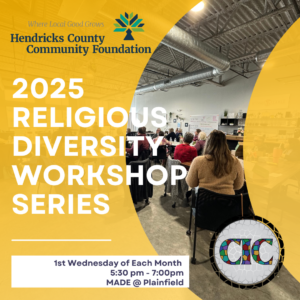 Indianapolis Indiana – The Hendricks County Community Foundation is excited to announce the launch of the 2025 Religious Diversity Workshop Series, presented in collaboration with the Center for Interfaith Cooperation and the Hendricks County Interfaith Council. These monthly workshops will explore and celebrate the core beliefs and unique practices of different religions, creating space for understanding and meaningful, conversations. The sessions will feature engaging speakers, panel discussions and opportunities for attendees to gain knowledge and appreciation for the diverse religious traditions that enrich our community. The workshops will be held on the first Wednesday of each month, from February through November of 2025, at MADE@Plainfield, from 5:30 – 7:00 pm.
Indianapolis Indiana – The Hendricks County Community Foundation is excited to announce the launch of the 2025 Religious Diversity Workshop Series, presented in collaboration with the Center for Interfaith Cooperation and the Hendricks County Interfaith Council. These monthly workshops will explore and celebrate the core beliefs and unique practices of different religions, creating space for understanding and meaningful, conversations. The sessions will feature engaging speakers, panel discussions and opportunities for attendees to gain knowledge and appreciation for the diverse religious traditions that enrich our community. The workshops will be held on the first Wednesday of each month, from February through November of 2025, at MADE@Plainfield, from 5:30 – 7:00 pm.
Charlie Wiles, CIC’s Executive Director, stated, “The Center for Interfaith Cooperation is honored to work with the Hendricks County Community Foundation on this series of religious diversity workshops. Our goal with all of our programs is to increase awareness about the religious diversity throughout Central Indiana, build empathy, and create more opportunities for meaningful conversations about faith and how it informs our personal, professional, and civic lives. This series provides a wonderful opportunity to achieve these goals.”
HCCF’s CEO and President William Rhodehamel commented, “We’ve been pleased to work with the Hendricks County Interfaith Council over the last two years to promote better understanding of the religious diversity in our community. Bringing this important and informative series from the Center for Interfaith Cooperation to Hendricks County is an honor. These workshops provide an invaluable opportunity for our community to engage with and learn from the many faith traditions that shape our shared experiences. By fostering understanding and empathy through open conversations, we can strengthen the bonds of our diverse community and create a more inclusive and welcoming Hendricks County for all.”
To register for any or all of the monthly workshops, visit: https://tinyurl.com/ReligiousDiversityWorkshops.
For information contact:
Frances Mock, Director of Community Relations
Hendricks County Community Foundation
317-268-6240 frances@hendrickscountycf.org
Jennifer Neer, Director of Development & Marketing
Center for Interfaith Cooperation
317-268-3200
jennifer@indycic.org
The Mission of the Hendricks County Community Foundation: To be a trusted community partner in understanding needs, aligning resources, and empowering people to address today’s priorities and create lasting impact. Our vision is Hendricks County as a place where everyone has the opportunity to have a fulfilling life and the tools they need to build a stronger future together. The Community Foundation manages assets of over $31 million in a collection of funds created by individuals, families, businesses and organizations for charitable purposes. In 2023 the Community Foundation gave over $1.7M in grants to charitable organizations and scholarships to local students. For more information, call 317-268-6240 or visit www.hendrickscountycf.org.
Based in the Indiana Interchurch Center, the Center for Interfaith Cooperation (CIC) was founded in 2011 and works to strengthen relationships among diverse religious communities in Central Indiana and beyond. CIC is dedicated to increasing religious literacy, building empathy, and encouraging thoughtful conversations about the role of religion in our personal and civic lives.
Update: Strengthening Healthy Support Networks in Minoritized Communities
In December 2024, members of CIC’s Interfaith Enrichment Corps (IEC) and site hosts around the city gathered to celebrate and affirm the value of these partnerships as part of CIC’s Strengthening Healthy Support Networks in Minoritized Communities project, co-led by the IU Health Congregational Care Network, and funded by a Community Impact Investment Fund grant from IU Health.
Here is a run down of the nonprofit faith-based service organizations—and the energetic Interfaith Enrichment Corps members who serve at each site, all for the greater good:
- The Felege Hiywot Center is a community center rooted in Ethiopian heritage that supports urban farming and environmental justice. IEC member William Agbor Baiyee is a teacher by trade who is stationed at Felege Hiywot to encourage youth in community service. “Felege Hiywot” means “looking for direction in life.”
- Masjid Al Mumineen is an eastside mosque led by Imam Ismail Abdul Aleem that is deeply anchored in its surrounding community, for example, serving 400 people through its food pantry this year, and hosting a support group for the justice-involved. The mosque participates in IU Health’s Congregational Care Network, helping to reduce social isolation through companionship and coordination of care. “Helping others produces dopamine,” said Imami in his remarks. “And that’s good!” IEC member Mohab Sayed-Elawad is a pre-med student supporting the mosque’s health-related programs.
- Llamada Final, led by Pastor Jorge Oswaldo Ramos, is a Christian congregation supporting the welfare of the Latino community on Indy’s west side. IEC member Aracely García and her mother (who works at the church) proudly shared the success of their first coat drive.
- The Al-Haqq Foundation runs a thriving faith-based academy for children. Under the leadership of Sister MomJara, IEC member Demou Drame is serving as a teaching assistant to grades 1 and 2. Sister MomJara spoke of plans to expand the academy to include high school. Plans for a health fair are in the works, and the mosque also recently started its own community development corporation, while also helping to settle new refugees from Senegal. “We serve God by serving people,” said Sister MomJara.
- Justin Thang, founding director of Hope for Tomorrow USA, an organization that uplifts the Burmese/Chin community, reported with pride on their work supporting the academic success of second generation refugees. IEC member David Hauhulh, soon to graduate with a college degree in business, has mentored many of the students over his IEC term.
- The Indianapolis Muslim Community Association (IMCA) is host to IEC member Matteo Hodge. IMCA is a faith-anchored organization that empowers youth through education, service, and wellness.
We are also grateful for IEC members Joni Clark and Imani Sankofa, stationed at the Center for Interfaith Cooperation itself. Imani guides CIC’s Emerging Interfaith Leaders program for ages 14-24, while Joni organizes the Interfaith Alliance for Mental Wellness.
CIC’s network of partnerships—for the purpose of strengthening support for faith communities in the name of health in all its forms—is always worth celebrating!
Meet IEC Member, Matteo
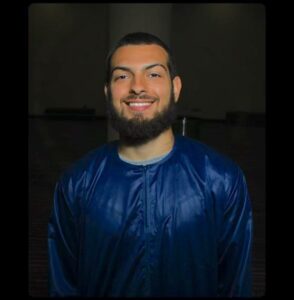 Matteo Hodge’s route to the practice of the Islamic faith came by way of another global “religion” … soccer.
Matteo Hodge’s route to the practice of the Islamic faith came by way of another global “religion” … soccer.
When trying out for the center back position with a semi-professional team called the Indy Gladiators, he found that “many of my teammates were Muslim,” says Matteo. In building brotherhood with them, he became curious about the Islamic faith. Until then, Matteo knew nothing about Islam. So he proceeded down a pathway of self-education and converted from Catholicism to Islam in 2022 at the age of 20.
Today, Matteo is the Interfaith Enrichment Corps (IEC) member at the Indianapolis Muslim Community Association (IMCA), a faith-anchored organization that empowers youth through education, service, and wellness. On the day we met at Muslims of the World (MOTW) Coffee & Pastries, Matteo stayed on afterward to meet with some youth as a spiritual coach. As an IEC member, he is leaning into his passion for mentorship.
In his exploration of the faith and dialogues with Muslims, Matteo learned that “to accept Islam, you have to proclaim that you believe that Mohammed was the last messenger. Noah, Jesus, and Abraham were messengers too, but Mohammed was the last one.” Matteo found that “Islam is a way of life, not just a way of praying or worshipping. Every decision that you make should hopefully align with the teachings of Islam.”
Those teachings include personal accountability, mindfulness, respect, and gratitude. “If you don’t thank people, you haven’t thanked God,” he says. In his mentorship of youth, Matteo helps young men see how the practice of Islam influences how you treat others, and how you conduct yourself.
“With so many youth at risk—getting kicked out of school, running away—Islam is full of principles that can help them make better decisions,” he says. “My goal is to help develop mature, well-rounded, accountable young men. It’s my job to give them space to ask questions so they feel comfortable getting the advice they need.”
Matteo’s transition from “Islam-curious” to active mentor was helped along by Ahmed Alamine, director of religious affairs at the Indianapolis Muslim Community Association, and imam, or leader, of its mosque, Masjid Al-Fajr. “He saw potential in me,” says Matteo, with a clear note of humility. Imam Alamine noticed Matteo attending prayer every Friday, volunteering for events, and spending a lot of time at the masjid on Indy’s west side, which is a hub for Muslims in need of help with healthcare, hunger, and other supports.
In addition to his work as an IEC member at IMCA, Matteo just finished his studies at Purdue Indianapolis, where he majored in cybersecurity (he also briefly considered becoming a firefighter). During his college career, he was a member of the IUI Muslim Student Association. Every Thursday, he and his fellow students would set up a booth in the Campus Center and give out editions of the Quran in English. Matteo admits that “it takes patience for this experience [of learning about Islam]. It is one I hope people are willing to seek to understand.”
At age 23, Matteo emanates palpable vibes of patience, accountability, and clarity about his purpose. These are the very mindsets he is eager to pass on to the youth he encourages and teaches. In 2025, he’s considering organizing a youth camping trip to build teamwork and instill brotherly bonds around the shared, character-building values embedded in Islam, such as charity, and restraint.
“Everything I ever learned about Islam has taught me to be a better person and has impacted my life for the better,” says Matteo. It is these lessons he is devoted to sharing with youth, via CIC’s Interfaith Enrichment Corps.
Written by Anne Laker
5 Metaphors about Snow and Interfaith Cooperation
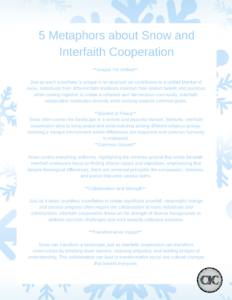 Snow can serve as a beautiful metaphor for interfaith cooperation in meaningful ways:
Snow can serve as a beautiful metaphor for interfaith cooperation in meaningful ways:
**Unique Yet Unified**
Just as each snowflake is unique in its structure yet contributes to a unified blanket of snow, individuals from different faith traditions maintain their distinct beliefs and practices while coming together to create a cohesive and harmonious community. Interfaith cooperation celebrates diversity while working towards common goals.
**Blanket of Peace**
Snow often covers the landscape in a serene and peaceful blanket. Similarly, interfaith cooperation aims to bring peace and understanding among different religious groups, fostering a tranquil environment where differences are respected and common humanity is embraced.
**Common Ground**
Snow covers everything uniformly, highlighting the common ground that exists beneath. Interfaith endeavors focus on finding shared values and objectives, emphasizing that despite theological differences, there are universal principles like compassion, kindness, and justice that unite various faiths.
**Collaboration and Strength**
Just as it takes countless snowflakes to create significant snowfall, meaningful change and societal progress often require the collaboration of many individuals and communities. Interfaith cooperation draws on the strength of diverse backgrounds to address common challenges and work towards collective solutions.
**Transformative Impact**
Snow can transform a landscape, just as interfaith cooperation can transform communities by breaking down barriers, reducing prejudice, and building bridges of understanding. This collaboration can lead to transformative social and cultural changes that benefit everyone.
By viewing snow as a metaphor for interfaith cooperation, we can appreciate how diverse elements come together to create something beautiful, powerful, and transformative, embodying unity amidst diversity.
embracing the world's faiths in indianapolis: Final thoughts
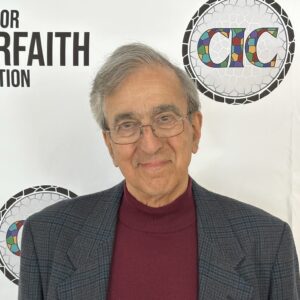 Learning about the different faiths and religions of the world in which we live can be an enlightening experience for all of us. During my life, I (Freddie Kelvin) have been very fortunate to have had the opportunity to witness firsthand the practices of many faiths and visit places where I came into contact with followers of the world’s major religions. It was both illuminating and humbling to have these rich and meaningful experiences.
Learning about the different faiths and religions of the world in which we live can be an enlightening experience for all of us. During my life, I (Freddie Kelvin) have been very fortunate to have had the opportunity to witness firsthand the practices of many faiths and visit places where I came into contact with followers of the world’s major religions. It was both illuminating and humbling to have these rich and meaningful experiences.
In Thailand, I visited magnificent Buddhist temples and listened to the wisdom of Buddhist monks. When in India, I watched Hindu women preparing for the colorful fall festival of Diwali and experienced the profound dignity of Jains praying inside their beautiful temple in Ranakpur. While in Jerusalem, I saw devout Jews in prayer at the Western Wall and felt the solemnity of Muslims at the Dome of the Rock. There, I also immersed myself in the breathtaking bustle of the Church of the Holy Sepulcher, which belongs to several Christian groups and where Jesus is believed to be buried. Visiting Haifa, I walked in the beautifully laid out Holy Baha’i Gardens, which contain the Shrine of the Bab, the founder of that faith. In Istanbul, I experienced the elegance of the Hagia Sophia Grand Mosque – now a museum – and the Suleymaniye Mosque, where I was privileged to see Muslims carrying out their daily prayers.
As a result of these travels abroad, I gained a variety of insights into many of the world’s faiths and came to feel less isolated within our global community. Without some understanding of how others live and practice within their widely differing belief systems, there is always the risk that we may not be sufficiently respectful of these differences, and history has shown that this may have dangerous consequences.
Faith can be considered an intensely personal belief, whereas religion is best defined as an organized, community-based structural system that usually combines faith with worship and rituals. Religion does, in many ways, constitute a path to learning how to find meaning and value in our existence, and to love our neighbors and those less fortunate than ourselves.
There is no question that, over the course of many centuries, organized religion has helped people to more comfortably manage their fears, hopes, and other emotional attributes. As the critically acclaimed religious scholar Karen Armstrong has said: “ A deep-rooted anxiety is part of the human condition; this is not neurotic, because it is ineradicable and no therapy can take it away.” The world needs religious traditions that are characterized by compassion and wisdom and that lead to acts of kindness to others within their communities.
The benefits of religion, however, have often extended far beyond local communities, for we should all recognize the great contributions that they have made to implement better health care and educational, cultural, and social facilities throughout many parts of the world. As a result, we can safely say that we now inhabit a far better planet than would otherwise be the case.
It is important to see the world’s faiths and religions in their current context. For example, we should be aware of the growing loss of religious adherents in the USA. Currently, about three-in-ten U.S. adults (29%) are religious “nones” – people who describe themselves as atheists, agnostics, or “nothing in particular” when asked about their religious identity (Pew Research Center Report, December 2021). To many, this constitutes an alarming statistic. History is replete with examples where religion has provided great benefits to society, but conversely, there have been too many times when religion has justified or perpetrated immeasurable harm.
So, we may well wonder where such inherent conflicts and contradictions of beliefs and belief systems leave us. Through both our and others’ experiences, there is boundless potential when people of good faith come together to know each other and work for the common good. And, what do we make of the still unresolved issue of separating religion and state? If the two are separated, this ensures that the government cannot exercise undue influence over our spiritual and religious lives. It would seem that we would then be able to appreciate true religious freedom, which so many see as essential both in fulfilling their own lives and in helping the lives of others. As a further benefit, individual rights are protected, as are the democratic values of plurality and tolerance. In practice, of course, it is not that simple.
There is a need, we believe, for religions to be a proactive force for good. Too often, misinformation and stereotypes determine how we understand one another. It is vitally important that we recognize the dangers that may result from this so we can then hope for a more tolerant and understanding global community.
The Center for Interfaith Cooperation (CIC) believes that this recognition is a critical goal. CIC provides, among other parts of its mission, opportunities to build empathy between different faiths and facilitate safe and healthy interfaith encounters. It is an organization that strives to carefully listen to and exchange ideas about the faiths and beliefs of its constituent members and those in the community at large.
I want to express my sincere gratitude to Charlie Wiles, the Executive Director of CIC, for offering me the opportunity to write the preceding articles and for coauthoring these concluding thoughts. I also wish to thank Jennifer Neer, its Director of Development and Marketing, for tirelessly connecting me with many members of CIC who have so greatly aided my understanding and respect for the world’s faiths. Thank you both for making this happen!
Written by Freddie Kelvin
embracing the world's faiths in indianapolis: paganism
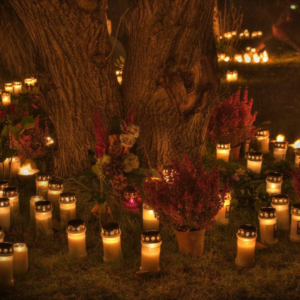 Paganism represents a wide variety of traditions emphasizing reverence for nature and a revival of ancient polytheistic religious practices. The term Pagan comes from the Latin word “paganus” which refers to those who lived in the country. When Christianity was adopted by the Roman Empire in the 4th century CE, this change of religion took place mainly in the cities. The people in more rural areas who still believed in more traditional ways came to be known as pagans. While some have defined Paganism as “being without a religion,” this is incorrect, for ancient Paganism refers to the mainstream religions practiced in pre-Christian societies.
Paganism represents a wide variety of traditions emphasizing reverence for nature and a revival of ancient polytheistic religious practices. The term Pagan comes from the Latin word “paganus” which refers to those who lived in the country. When Christianity was adopted by the Roman Empire in the 4th century CE, this change of religion took place mainly in the cities. The people in more rural areas who still believed in more traditional ways came to be known as pagans. While some have defined Paganism as “being without a religion,” this is incorrect, for ancient Paganism refers to the mainstream religions practiced in pre-Christian societies.
During the Middle Ages in Europe (500 to 1500 CE), the power of the Catholic Church was pervasive, and followers of ancient Paganism were accused of Satanism and worship of the Christian devil. Modern Paganism is the result of a revival of ancient Pagan religious practices. It started when Europeans became more aware of the ancient world during the Renaissance period in the 1500s. As a result, Pagan traditions influenced the evolution of European art, music, literature, and ethics. Despite a temporary setback resulting from the Reformation, Paganism again gathered strength as the Age of Enlightenment developed during the 17th and 18th centuries.
There are many misrepresentations of Paganism. True followers of Paganism are not evil, do not engage in black magic, and do not worship the devil. It is difficult to generalize about modern Paganism, as there is no central authority and its practitioners tend to be suspicious of institutions. The majority of modern Pagans practice alone (“solitaries”). Despite this, they have a remarkably cohesive culture and set of values.
Modern Paganism is a nature religion; nature is both sacred and interconnected. Its practitioners believe that they are immersed in a vast web of natural life, which is their true community. Accordingly, many modern Pagans strongly emphasize environmental conservation and stewardship. The cycle of the natural year, with its different seasons, is seen as a model for spiritual renewal and growth. In keeping with this, a series of festivals usually take place, each providing access to different divinities depending on the time of the year.
The many deities of Paganism reflect the diversity of nature. Pagans are free to determine, on an individual basis, what a deity means to them and how they develop a relationship with their chosen deity. Whether through study, meditation, or prayer, each individual decides which deity is most suited to their needs. Pagan religions all recognize the feminine face of divinity, and acknowledge a female deity often called “the Goddess”. In Paganism, all women have a religious power identical to that of men.
As well as worshipping numerous gods (polytheism), many Pagans also believe in pantheism, which is the worshipping and respecting of all gods within the pantheon of human civilization. Paganism is a broad term that includes many diverse practices including witchcraft (Wicca), Druidism (Celtic traditions), and Norse (Viking) rituals.
Wicca is a nature-based Pagan belief system founded in the mid-20th century. Many Wiccans meet in small groups called covens. The moral code of Wicca, known as the “Wiccan Rede,” is: “If it harms none, do as you will.” Most Wiccan groups practice magic (magick) in which they use “universal energy” to affect an entity to a desired result. Many believe in the value of spiritual and psychic healing in conjunction with more conventional medical treatments.
Druidism is inspired by Celtic spiritual history. It has no written laws, no gurus, and minimal hierarchy.. Central to Druidic belief is a love of nature combined with a pragmatic approach to spiritual insight in daily life. Druidism is especially concerned with the ecologic crisis with which mankind is faced and therefore works in a multitude of ways to heal the earth.
Modern Pagan rituals extend far beyond those festivals that celebrate seasonal changes or astronomical events such as solstices. Pagans often give offerings to deities, spirits, or ancestors; these offerings may be accompanied by food, drink, poetry, or other ways of showing respect.
Physical engagement, such as dancing, chanting, and drumming, is also commonly practiced. Pagans may use representations of nature such as the earth, air, fire, or water for both cleansing and consecration. Celebration of important rites of passage, including birth, marriage, and death are also important aspects of Pagan rituals.
A critical aspect of Paganism is the personal responsibility that its practitioners must acquire. Pagans do not consider any government, institution, or church should determine their spiritual values, moral code, or their understanding of the nature of Divinity. There is a minimum of dogma in modern Paganism which believes in a healthy skepticism of the ideas of others, so much so that these ideas are not acceptable without a careful personal investigation of their validity.
Written by Freddie Kelvin
embracing the world's faiths in indianapolis: sufism
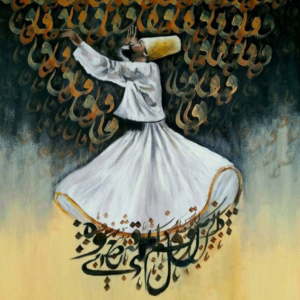 “Every age of the world has seen awakened souls, and as it is impossible to limit wisdom to any one period or place, so it is impossible to date the origin of Sufism” ~ Hazrat Inayat Khan
“Every age of the world has seen awakened souls, and as it is impossible to limit wisdom to any one period or place, so it is impossible to date the origin of Sufism” ~ Hazrat Inayat Khan
The beginnings of Sufism are not clearly known. The traditional view is that it is the inward-looking mystical dimension of Islam, and dates back almost to the time of Muhammad. In keeping with this, it is well established that the majority of Sufis in the world today are Muslims. Another view, as quoted by Sufi Hazrat Inayat Khan above, considers that Sufism has multi-religious roots that preceded Islam which are related to, among others, the early Christian mystics of Syria and Egypt, the Essenes, and the Zoroastrians.
While there are other suggested origins of the term “Sufi”, the most widely accepted one is that it is derived from the Arabic word “suf” which means “wool” and is a reference to the woolen garments traditionally worn by early Islamic mystics and ascetics.
Whereas traditional Islam believes that, by connecting with God, its followers will ultimately encounter the divine in the hereafter, Sufi thought enables its practitioners to achieve this connection while they are still alive. They can do this because they undergo a stringent process of inner purification and introspection.
Sufi practices and thoughts extend across socioeconomic boundaries, geography, and languages. Sufi orders, known as “tariqats” (paths) are found throughout the world, with each order having its own distinct identity, religious rituals, and leadership structure.
The basic components of the orders are that of the “murshid” (teacher), and the “mureed” (student) who is initiated onto the path of Sufism. These teachers derive their legitimacy from a chain of transmitted spiritual wisdom (silsila) which may lead back to a prominent saint or mystic, and eventually to the prophet Muhammad himself.
A central part of Sufi worship is the rite of “zikr” which involves constant remembrance of God, often with singing or chanting, carried out both communally and individually, in order to cultivate a greater connection with the Divine. Each person cultivates their own connection or relationship with the Divine and, in turn, when practiced in community, these effects are amplified.
Other practices vary from order to order. These practices may include prayers, meditation, fasting, and performing rituals at graves and shrines. Through deep introspection, Sufis aspire to attain absolute purity of intention and action (“ikhlas”).
Sufism mixes its mainstream religious observances with a range of supplementary spiritual practices including poetry, chanting, singing, and dancing. The whirling dervishes of Turkey and other parts of the world are a well-known example of the last of these forms of artistic expression. The whirlers, called “semazens”, practice a form of meditation in which they seek to abandon the self and merge with the oneness of God, often achieving an ecstatic state.
One of the most celebrated Sufi poets is the popular 13th-century Persian scholar, theologian, and mystic Jalal al-Din Rumi, or simply Rumi. His spiritual works continue to be translated extensively both within and beyond the Muslim world. Among his most famous quotes are:
- “You are not a drop in the ocean. You are the entire ocean in a drop.”
- “We carry inside us the wonders we seek outside us.”
- “Yesterday I was clever, so I wanted to change the world. Today I am wise, so I am changing myself.”
Sufi orders did not develop until the 12th century C.E. The orders were formed around spiritual founders, who attained saint status and saw shrines built in their names. Sufism spread throughout the Islamic world through trade routes, missionary activities, and the establishment of Sufi orders. Today, many well-known Sufi orders enjoy a large global following.
For a multitude of people around the world, Sufism has become a means of achieving a spirituality that is rooted in Islam but is not necessarily limited to that religion. Followers of Sufism have grown in number worldwide because they have been able to absorb local customs and culture. Because of this ability to evolve and adapt, Sufism has been criticized and treated harshly by some conservative Muslims.
As already mentioned, Hazrat Inayat Khan considered Sufism to be derived from multi-religious roots that preceded Islam. Inayat Khan was a brilliant classical Indian musician and Sufi who was instructed by his teacher in 1907 to bring Sufism to the West. He came to the United States in 1910 and proceeded to articulate a message of spiritual liberty that reflected the universal nature of Sufism.
Inayat Khan believed that the point of view of the wise differed from that of the traditional followers of a religion. He stated that the wise, whatever their faith, have always managed to meet each other beyond the boundaries of their structured religion. He made the case that Sufism overcomes the boundaries that separate different faiths. He founded the Sufi order now called the Inayatiyya, a worldwide organization dedicated to Universal Sufism that is headed up by Hazrat Inayat Khan’s grandson, Pir Zia Inayat Khan.
Another Sufi organization, Sufi Ruhaniat International, is a worldwide spiritual family walking in the footsteps of its founder, Samuel Lewis, and his teacher, Hazrat Inayat Khan. Its stated mission is “helping individuals unfold their highest spiritual purpose, manifest their essential inner being, and live harmoniously with others in the hope of relieving suffering and contributing to the awakening of all of humankind.” One of its main spiritual practices is to participate in the Dances of Universal Peace – body prayers drawing on the sacred phrases, scripture, and poetry of many spiritual traditions of the earth that blend chant, singing, and evocative movement to unite and empower people to live peaceful lives. For more information, visit its website: http://www.ruhaniat.org or http://www.dancesofuniversalpeace.org.
Written by Freddie Kelvin and Caryn Flowers
A Reflection on the 2024 Jewish High Holy Days
 In the Jewish Faith, we are about to begin the 10 day period known as Yamin Noraim, the Days of Awe, more commonly known as the High Holy Days. For centuries, Jewish people have gathered together as a community to stop and think about the year past and the year ahead. This year, Rosh Hashanah begins at sundown on October 2nd, corresponding to the 1st day of Tishrei in the year 5785 on the Hebrew calendar, and ends at sundown on October 4th; Yom Kippur begins at sundown on October 11th (the 10th of Tishrei) and ends at sundown on October 12th.
In the Jewish Faith, we are about to begin the 10 day period known as Yamin Noraim, the Days of Awe, more commonly known as the High Holy Days. For centuries, Jewish people have gathered together as a community to stop and think about the year past and the year ahead. This year, Rosh Hashanah begins at sundown on October 2nd, corresponding to the 1st day of Tishrei in the year 5785 on the Hebrew calendar, and ends at sundown on October 4th; Yom Kippur begins at sundown on October 11th (the 10th of Tishrei) and ends at sundown on October 12th.
Rosh Hashanah, “The Head of the Year,” is a gift of time and an opportunity to learn and grow. It is a happy time as we welcome the New Year, but it is also a serious time as we think about ourselves, what we have done in the past year, and how we may do better in the year ahead. We eat apples dipped in honey in the hope of a sweet New Year. In a dramatic and powerful part of the service, the Shofar, or ram’s horn, is blown to announce the New Year and awaken us in the intention to do better. We ask God for a happy and peaceful year, and we give thanks to God for all good things. God opens the Book of Life which contains all the things we have done in the past year, each of our lives comes before God, and God judges us for the coming year. The Book is kept open, and we each have the power to change our judgment through prayer, forgiveness, and good deeds (the Book is closed at the end of Yom Kippur). When the service concludes, we say “L’Shanah Tovah Tikatevu,” may you be written in the Book of Life for a good year.
Yom Kippur, “The Day of Atonement,” is the holiest day of the Jewish year. It is serious and holy, but not sad. After a festive meal, a fast is begun prior to the start of services. This fast allows more time to pray and helps us to know hunger. Kol Nidre, “all the vows,” the most beautiful service of the year, begins at sundown. We ask God for forgiveness. It is the only evening service when tallit (prayer shawls) are worn. The Torah are taken out, and the Kol Nidre prayer is chanted three times. An all day service follows the next day, as we pray a confession of sins, not only for our own sins, but for the sins of others, for things either done or not done. Yizkor, a memorial service, is the time to remember family and friends who have died. To honor their memory, we promise to give Tzedakah, or contributions, to help those in need. The Biblical story of Jonah is told during the service. Neilah, or “closing,” is the final part of the service, as the Book of Life is closed. The Shema is chanted to reaffirm our belief in God, and the Shofar is once again blown. After sundown, the long fast is broken.
As each of us looks at our individual lives during this period of introspection, may we all as well look at the vast world around us that continues to need our prayers.
Written by Alan Bercovitz
Embracing the world's faiths in indianapolis: Baha'i
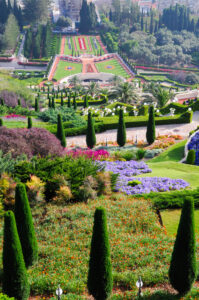 “All peoples and nations are of one family, the children of one Father, and should be to one another as brothers and sisters.” ‘Abdu’l-Baha
“All peoples and nations are of one family, the children of one Father, and should be to one another as brothers and sisters.” ‘Abdu’l-Baha
The Baha’i Faith is one of the most widespread and fastest-growing religions today, with at least 5 million adherents. Because its teachings strongly focus on worldwide peace and unity, its approach to other faiths is highly tolerant and appreciative. Baha’is respect all religious prophets as divine messengers.
The Baha’i Faith is a relatively young world religion. In 1844, a Persian merchant named Ali-Muhammad declared that he was the long-awaited redeemer who would bring peace – and justice – to the entire world. He called himself the “Gate” – or, in Arabic, the Bab. His religious movement, Babism, gathered large numbers of followers, but the Islamic clergy violently opposed it, persecuting and killing thousands of its adherents. Finally, in 1850, Ali-Muhammad was executed by a firing squad for heresy against Islam.
The Bab predicted that God would send another messenger to replace him, and more than two dozen men claimed the role. The most successful claimant was a Babi named Husayn-Ali. Husayn-Ali was imprisoned in the Siyah-Chal, Tehran’s notorious underground dungeon, and later exiled to Baghdad, Constantinople (today Istanbul), and Adrianople (today Edirne) for his religious beliefs and influence. In 1863, while in Baghdad, he proclaimed that he was the one promised by the Bab and all the major world religions. He gave himself the title of Baha’u’llah (the Glory of God). His followers started calling themselves Baha’is, or the “followers of glory”.
Eventually, the Islamic-led Ottoman Empire banished Baha’u’llah and his family to a penal colony in Akko, Palestine (now Acre, Israel) where he spent the remainder of his life writing and teaching. He taught that God had sent a succession of messengers before him, including Abraham, Moses, Buddha, Krishna, Zoroaster, Jesus, and Muhammad, and that other messengers would come after him. Furthermore, he explained that God’s ultimate message was not religious conflict but one of global unity and peace.
Before his death, Baha’u’llah appointed his son ‘Abdu’l-Baha (“servant of glory”) as his successor. ‘Abdu’l-Baha was responsible for directing the construction of the Shrine of the Bab in Haifa, where the Bab was buried. After the Young Turk Revolution in 1908, ‘Abdu’l Baha was able to leave Akko to travel the world and spread his father’s message. His grandson Shoghi Effendi was named his successor and, during his leadership, the faith quadrupled in size.
A core belief of the Bahai Faith is unity. This concept of unity applies to many aspects of life including unity of religion, humanity, peace, and education. Baha’is advocate for the equality of men and women, and the elimination of all forms of prejudice. The Faith also stresses the importance of an independent search for truth rather than blindly following others.
Within the Baha’i Faith, these major goals are pursued without any priests or sacraments. Congregational worship plays a limited role; when Baha’is gather together, it is usually in homes and takes place without any formality. The Baha’i calendar is based on 19 months, each of 19 days duration, with four or five intercalary days inserted between the last two months of the year. Each month begins with a community gathering called a Nineteen Day Feast which includes spiritual, social, and administrative components.
Despite the absence of clergy and a lack of ritual, Baha’is are expected to pray regularly to improve their devotion to God. On a daily basis, every Baha’i should recite one of three prayers written by Baha’u’llah while facing his shrine (the Qiblih). These three prayers are known as the short obligatory prayer (a few sentences), the medium obligatory prayer (several paragraphs), and the long obligatory prayer (more than 1,500 words in length). Baha’is can choose any of these three prayers, and each has specific times at which they must be said and specific directions that must be followed. Additionally, meditation is part of every individual’s devotional practice.
The main scriptures of the Baha’i Faith were written by the Bab and Baha’u’llah, and are considered to be divine revelations. Of these, the most sacred is the Kitab-i-Aqdas (“The Most Holy Book”), which was composed by Baha’u’llah in Arabic in 1873 and details the Faith’s main laws, prophecies, and ethics. The Kitab-i-Iqan (“The Book of Certitude”), also written by Baha’u’llah, explains the progressive nature of religious revelation and divine guidance. The seven arguments defending the Bab’s divine claims are documented in the Dala’il-i-Sab’ih (“The Seven Proofs”). The journey of the soul is described in two mystical treatises (“The Seven Valleys” and “The Four Valleys”) written by Baha’u’llah.
Baha’is believe that the universe is eternal and infinite. The diversity of the natural world is an expression of the Creator’s attributes, but humans are not to worship nature. Rather, they should show respect for the environment and handle natural resources appropriately. The Baha’i Faith believes in the eternity of the soul after death and that, after being disembodied, the soul continues on a path toward joy and unity with God.
Like Muslims with Ramadan, the Baha’i Faith believes that an annual period of fasting prepares the soul for spiritual awakening. The Nineteen-Day Fast occurs during the last month of the Baha’i year ( typically March 2-20). This observance is expected, with some exceptions, of every Baha’i between the ages of fifteen and seventy. Both the Shrine of the Bab in Haifa, Israel, and Baha’u’llah’s shrine in Acre are pilgrimage sites for Baha’is; these pilgrimages usually last nine days.
Bahai’s all over the world are focused on building vibrant communities based on spiritual principles and the elimination of all forms of prejudice. To do this, they host interfaith devotional spaces for friends and neighbors, they offer grassroots educational activities for children, adolescents, and adults, and carry out community service projects focused on social action and discourse.
Without clergy or any form of initiation, becoming a member of the Baha’i Faith only requires a personal commitment to the teachings of Baha’u’llah. Most often, converts sign a declaration and registration card proclaiming their acceptance of the Baha’i way of living, as well as their belief in the teachings of Baha’u’llah. Followers of the Baha’i Faith do not proselytize.
To learn more about this fast-growing and unifying faith, visit www.bahai.org or www.bahai.us. For information about local activities, visit www.indybahai.org or www.facebook.com/ IndianapolisBahai. The Indianapolis Baha’i community welcomes all to join its open house breakfast and devotions on the first Sunday of every month at 9:30 am. The Indianapolis Baha’i Center is located at 3740, W. 62nd St., Indianapolis 46268.
Finally, I would like to express my sincere thanks to Dhabih Chulhai for his skillful assistance in refining the text of this blog.
Written by Freddie Kelvin
MEET IEC MEMBER, Imani
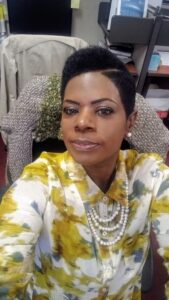 When Imani Sankofa was a little girl, her grandmother, Cleona R.M. Fisher, who raised her, worked as a caterer for the Jewish synagogue in Indianapolis. It was an early taste of the interfaith perspective. She recalled how her grandmother fed people and made clothes for them as well. She was a fine seamstress too. Her grandmother, a Jehovah’s Witness, also took her to the Temple, where she was introduced to a life of service in faith. As a young girl, Imani took time to do small, but helpful things in her neighborhood like helping senior citizens do things around their houses or running errands for them, and sometimes washing and brushing their hair. “I’ve always been a giver and server,” she says.
When Imani Sankofa was a little girl, her grandmother, Cleona R.M. Fisher, who raised her, worked as a caterer for the Jewish synagogue in Indianapolis. It was an early taste of the interfaith perspective. She recalled how her grandmother fed people and made clothes for them as well. She was a fine seamstress too. Her grandmother, a Jehovah’s Witness, also took her to the Temple, where she was introduced to a life of service in faith. As a young girl, Imani took time to do small, but helpful things in her neighborhood like helping senior citizens do things around their houses or running errands for them, and sometimes washing and brushing their hair. “I’ve always been a giver and server,” she says.
Today, Imani has passed her grandmothers’ service ethic to her own granddaughter, Kennedi. This year, Imani took Kennedi along to the National Alliance to End Homelessness Conference in Washington DC, where they visited Capitol Hill to “listen to the stories of how our nation cares for our unhoused brothers and sisters.” Now, Kennedi’s fifth grade class at IPS School #106, Robert Frost Elementary, has decided to pack “love bags” or care packages for the unhoused in Indianapolis. Kennedi too loves helping and serving others.
“I’ve always been interested in translating the Holy scriptures into practical terms,” Imani says. Inspired by the way Jesus used the parables to teach love, forgiveness and selflessness, this real-world kind of ministry has always come naturally to Imani, more as an outgrowth of her personal spiritual journey, than as a profession. Imani recalled a memory during the time she was a student pursuing a degree in criminal justice at Martin University. “One of my professors, Rev. Dr. Natalie McClendon-Obie, told me about her own journey and similar path to ministry,” says Imani. Dr. Obie thought she’d go to law school following her undergrad, but instead answered the call to ministry and enrolled at Christian Theological Seminary (and is now the senior pastor at Trinity CME Church).
Imani felt her heart tugging toward a seminary education and ministry as a vocation … but, like Moses and Gideon she fought it. “I did not feel worthy of such a pure calling of service to others and the responsibility of preaching God’s word and the souls it would shape. It is an extremely humbling undertaking!”
Although she has accepted her calling to ministry and preaches the word on occasion as a minister in training at her local church, when she found the opportunity to serve in a broader mode of ministry: the CIC, the Center for Interfaith Cooperation’s Interfaith Enrichment Corps (IEC) AmeriCorps program, she was truly excited. “I see it as an opportunity to be a part of intentionally building the vision of Dr. King’s Beloved Community!” she exclaims.
“When we lay all the faiths side by side and look at the commonality of what we all believe,” says Imani, “we are far more alike than different!” Imani loves being part of CIC’s IEC program, which has expanded her service efforts even further. “We focus on what we have in common across faiths and increasing the bandwidth of our humanity.”
Mentorship is another area Imani finds hard to resist. “We have to be intentional in challenging our youth to see beyond the present and imagining what can be,” says the former educator, but we must also remember that we are the mirrors of influence and inspiration reflecting all that life has to offer.”
Imani’s first IEC placement was at the Ross Foundation, a non-profit on the Far Eastside that advocates for those seeking resources and support with issues such as: affordable housing, evictions, tenants rights, mental health, food insecurity and after-school mentoring. Another way in which Imani was able to provide support and service during her time at The Ross Center was by supporting a women’s group of a community partner of The Ross Center. “On the second Thursday of every month, from 6-8 pm, the women’s group would meet to support, inform, educate, and empower women—more specifically Black women—on the issues of Black maternal health,” says Imani. “The group is a part of the not-for-profit, Not One More, because Black women die in childbirth at much higher rates than other races.” Imani defines this group as a true sisterhood where women can increase their awareness of their maternal rights and their overall health.
This fall, Imani took on a new role within the IEC: working with the Emerging Interfaith Leaders program at CIC, helping teens experience the power of interfaith understanding and shaping their outlook on “difference.”
Thanks to her grandmother’s love for ALL people and working in the community to serve others in need regardless of their race or faith, practicing inclusivity is second nature for Imani. Her family never met another family they didn’t like based on differences. “Just by breaking bread spiritually and literally with people from other faiths,” Imani says, “you can feel love, compassion and grace. That’s what appeals to me about service and ministry, especially interfaith ministry.”
In a triumph of poetic justice, Imani’s name seems to have determined her destiny as a helper of people. “Imani” is the seventh principle of Kwanzaa, and it means “faith” in Swahili. “Sankofa” is a mythical bird whose feet face forward while looking back ONLY to pick up the gems of wisdom and knowledge of our past. “Sankofa” reminds us that the knowledge from our past is what will guide us in our future. Her middle name, Yaa Ansantewaa, given to her by a dear friend who loved her passion for justice and equity, is after the Asante warrior Queen Mother Yaa Asantewaa (1840-1921), who fought against British colonialism and who defended the honor of the Ghanaian King, her people, and the Golden Stool, which was as sacred to them as the Arc of the Covenant is to Christians.
Imani says: “I believe my name embodies who I am, my character, my beliefs, my mission, and my alignment with God’s will for my life of service to my brothers and sisters.”
Outside of her IEC service at CIC, Imani is a member of the Indianapolis Metro Chapter of the Gospel Music Workshop of America, serves on the board of the Indianapolis Continuum of Care (CoC Indy), an initiative of CHIP (Coalition for Homelessness Intervention & Prevention) and the Blueprint Council to End Homelessness, which is the governing body of the CoC. For her work, Imani received an award in 2024.
You’ll also find her distributing meals as a volunteer with many of the ministries that serve the unhoused downtown at the Indianapolis Central Library and the homeless outreach ministries through her church home of Breeding Tabernacle CME. Imani also volunteers at the Nur Allah Islamic Center in their garden and with Overdose Lifeline where she assists in distributing Fentanyl and Xylazine testing strips and life-saving Narcan to those she encounters while engaging in street outreach. She also makes it a point to connect the organizations and community partners she engages with to build a strong network of resources. One of her most recent connections is between the CIC and Dress for Success.
“I serve everywhere I go, in every way I can,” she says. “I do this because it is what I am compelled to do. And it’s not for me or any of us to judge anyone in need.…it is to respond with what’s in our hearts.”
Written by Anne Laker and Imani Sankofa
MEET IEC MEMBER, sydelle
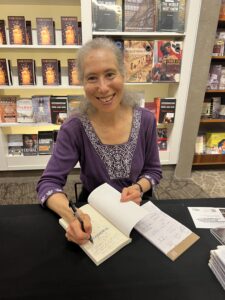 “I live authentically,” says Sydelle Pearl, CIC AmeriCorps Member and Emerging Interfaith Leaders Coordinator. For Sydelle, a New Jersey native, living authentically means reacting with full sensitivity to history, to culture, and to the wide diversity of faith experiences.
“I live authentically,” says Sydelle Pearl, CIC AmeriCorps Member and Emerging Interfaith Leaders Coordinator. For Sydelle, a New Jersey native, living authentically means reacting with full sensitivity to history, to culture, and to the wide diversity of faith experiences.
The written word provides abundant opportunity to react and process. Sydelle — a member of the Ashkenazic Jewish faith tradition, author of eight books, and a trained children’s librarian — has devoted her life to education through story. In fact, her most recent book, Wordwings (2017) that is all about the power of Story to uplift the people of the Warsaw Ghetto took Sydelle to the United States Holocaust Museum in Washington, DC in June where she did book signings.
One of Sydelle’s other books — Elijah’s Tears: Stories for the Jewish Holidays (2004) — ties neatly back to her interfaith work at CIC. The book contains original folktales about the Prophet Elijah, some directly inspired by Sydelle’s visit to Jerusalem. “I really wanted this book to be read by people who are not Jewish,” says Sydelle. “The glossary in the back was crucial, to help people of all backgrounds understand some Jewish words used in my stories. Plus, I love words, their pronunciation and origins.”
That same idea informed Sydelle’s vision for CIC’s Emerging Interfaith Leaders program. “Exposure is the most important thing, along with reflection. Both art and faith help us be in touch with our humanity, our spirit, our voice.” It inspired her to become an Interfaith Enrichment Corps member specifically to work with young people in their own interfaith journeys.
This summer at CIC, she helped eight high school students react with full minds and hearts to a curated interfaith experience. Sydelle designed an immersive journey into the mosaic of faiths in Central Indiana. June 3-7, 2024, the eight Emerging Interfaith Leaders walked the Indianapolis Spiritual Trail and visited the Hindu Temple of Central Indiana, Masjid Al Fajr, Indiana Hebrew Congregation, UUCCI (Unitarian Universalist Center of Central Indiana) — the interfaith campus in Columbus, IN, St. Monica Catholic Church, and the Indiana Buddhist Center.
Reflecting on their own traditions and touring sacred spaces, the students experienced memorable revelations, which they shared at a culminating gathering at the Indiana Interchurch Center June 7:
- “I learned how Jewish people implement the Torah.”
- “Every culture has people who gave up their lives to preserve their faiths.”
- “I learned about the similarities between Judaism and Islam.”
- “I learned sympathy.”
- “You may have a question answered by the time you finish walking a labyrinth.”
“This [interfaith] work is enormously important,” says Sydelle. “It is humanizing, formative — and rare. How often do we find opportunities to formally expose ourselves to faith traditions outside our own?”
Written by Anne Laker
MEET IEC MEMBER, EUGENE
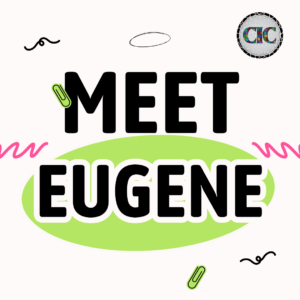 What’s the common thread of humanity? “People just want to be accepted,” says Eugene Jeng, community resource coordinator and member of the Interfaith Enrichment Corps at the Center for Interfaith Cooperation.
What’s the common thread of humanity? “People just want to be accepted,” says Eugene Jeng, community resource coordinator and member of the Interfaith Enrichment Corps at the Center for Interfaith Cooperation.
His studies as a sociology major at Indiana University Bloomington and his love of geography and ethnic studies perfectly positions him to do his job, which is to “make connections and establish partnerships between congregations and organizations for the overall main objective of providing assistance, such as: social services, family services, legal services, or resources for homelessness,” he says. This is made obvious in his job description duties which articulates specialization in Housing, Education, Food, and Healthcare.
An example of one of his on-the-job experiences involves liaisons with the Chin Bethel Christian Church. Its congregation is mainly comprised of Burmese and Burmese-Americans in which most social service providers tend to be unfamiliar with. “The resources I connect them to may not be specific to the Burmese culture,” Eugene explains, “and so the congregation would possibly need help in communicating their needs and receiving the right support.”
Another example involves another congregation Eugene has assisted in the Indianapolis metro area: Iglesia de Christo is situated on Indy’s northwest side. “Most of Iglesia’s members need health care resources, particularly or especially dental care, diabetes, and mental health,” Eugene says. “For the most part, I conduct the social networking and relationship building between us and them, but it ends up being frustrating at times when there is a lot of turnover at all the social service organizations,” he says.
But Eugene perseveres. “What I want to accomplish at CIC is to accelerate my interpersonal skills and gain qualifications for achieving the goal of assisting clients to succeed, to get partner organizations onboard with CIC and its network in fulfilling these aims, and to develop working relationships with a lot of trust and compatibility.”
Speaking a common language is one tool for building trust. Fortunately, Eugene’s superpower is his photographic memory, which gives him facility with foreign languages. He speaks advanced level German and can read books and watch movies in Spanish.
And Eugene’s courses on race and ethnic relationships at IUB (Indiana University) informs his daily work as a member of CIC’s Interfaith Enrichment Corps. He’s especially indebted to his professor, Dr. Monica Heilman, Ph.D. candidate in sociology, who’s published research on subjects such as: the responses of multiracial individuals to everyday inquiries about their racial identities, and how young adults who are multiracial experience and engage with whiteness, both according to their own identities and the overall mainstream society at large. “Professor Heilman’s courses really expanded my interests in race and ethnic relationships,” says Eugene. “I really, deeply love the study of different civilizations and cultural backgrounds — how they coexist and survive.”
The AmeriCorps IEC program has helped Eugene learn teamwork, communication, and seeing eye-to-eye with other perspectives as he works to support cultural communities and congregations in their quest for care and services. As an IEC member, he is and has always been hard at work breaking down the barriers shared among all the congregations with distinct ethnic identities that he has been working with from the very start, plus the broader networks that aid them.
He is doing this noble work of great responsibility at CIC with the clearest of intentions (as summarized in this concluding statement): “I wish to make a difference so that people may have a chance in this country as well as in other countries around the world to survive, have a purpose, meet their goals, and be fortunate with their circumstances.
Written by Anne Laker
EMBRACING THE WORLD’S FAITHS IN INDIANAPOLIS: CHRISTIANITY
 “So we have known and believe the love that God has for us. God is love, and those who abide in love abide in
“So we have known and believe the love that God has for us. God is love, and those who abide in love abide in
God, and God abides in them” (I John 4-16, NRSVUE).
With more than two billion adherents, Christianity is the most widely practiced religion in the world. Christianity evolved from Judaism during the first century CE in the Roman province of Judea. The Jewish people looked forward to a time when a leader – the Messiah – would appear and guide them to freedom from Roman oppression. Jesus’ followers, who were initially Jewish, believed that Jesus was that Messiah.
Christianity proclaims that Jesus was the son of God and was born in Bethlehem to his mother Mary through a miraculous virgin birth. While still a young man, around 30 CE, Jesus began a public ministry; his early followers were disciples and only became known as Christians much later. In 312 CE, the Roman emperor Constantine converted to Christianity, which gave enormous power to the growing religion and helped it replace paganism throughout the Roman Empire.
Jesus’ teachings were primarily to the marginalized. He preached an ethical code based on love for one’s neighbor, helping the needy, and forgiving others’ misdeeds. He emphasized the importance of humility, obedience, and service to others. He spoke of a coming kingdom and impending judgment, teachings that set him against representatives of the Roman Empire and the authorities of his day.
Eventually, Jesus’ public appeal attracted the attention of the authorities, leading to his arrest, trial, and execution by crucifixion. According to his followers, Jesus rose from the dead three days later. His sacrificial death enabled the sins of humanity to be reconciled with God. Christians believe that by following Jesus’ faith, obeying his teachings, and repenting for their sins, they will be granted salvation and enjoy everlasting life with God after their earthly lives.
The Christian Bible came into being gradually over the course of centuries, and the Bibles of the Catholic, Orthodox, and Protestant branches differ even today, but all Christian Bibles contain at least two sections: the Old and the New Testament. The Old Testament is the original Hebrew Bible, and contains the scriptures of the Jewish faith. The New Testament has two parts: the Gospels (literally “good news”), telling the story of Jesus according to Matthew, Mark, Luke, and John; and the Letters (or Epistles) written by various Christian leaders to provide guidance for the earliest church communities. Although many Christians no longer take the accounts in the Bible literally, they all follow Jesus’s teachings closely.
Paul the Apostle was, initially, a zealous Jew called Saul who was a determined persecutor of the followers of Jesus. One day, on the road to Damascus, he had a dramatic experience after seeing a vision of Jesus: an experience that converted him to Christianity and changed his whole life. After his conversion, he adopted the Roman name Paul and was highly influential in spreading the Christian faith through his passionate missionary work and writings.
Christianity differs from other monotheistic religions, such as Islam and Judaism, because of the doctrine of the Holy Trinity. Despite a diversity of opinion, the majority of Christians embrace this Trinity, which prevailed following the First Council of Nicaea in 325 CE. This doctrine states that, while God is a single entity, God also exists as three distinct and eternal beings: God the Father, God the Son (Jesus Christ), and God the Holy Spirit. In this way, God has influenced life on Earth through his Son, Jesus Christ, who was a sacrificial atonement and of the same essence as God. This influence continues through the Holy Spirit, the Spirit of God which Christians believe to indwell each of them.
Jesus made it clear that the kingdom is not restricted to people of a particular race or class but is open to everyone. He was always the first to see the potential for good in people; belief in God should offer hope to the poor, the deprived, and the oppressed. In the Bible, Jesus instructs his followers to: “Go and make disciples of all nations” (Matthew 28:19).
Accordingly, Christian missionaries have traveled to different parts of the world preaching the Christian gospel, converting people to Christianity, and establishing vital institutions such as hospitals and schools. Christianity also introduced a strong moral and ethical framework that greatly influenced various societies’ development of legal systems and human rights. However, it should also be noted that the spread of Christianity was not always without negative consequences.
Prayer is one of the most important practices in Christianity as it allows believers to communicate directly with God. There are many different forms of prayer, including praise, thanksgiving, and confession. Christians believe that prayer should be carried out regularly, both privately and in the company of other believers. Common prayers include the Lord’s Prayer (taught by Jesus), prayers from the Book of Psalms, and spontaneous prayers spoken from the heart.
Holy Communion, also called the Lord’s Supper or the Eucharist, is the most widely practiced of the Christian sacraments – the rites instituted by Christ. It commemorates the Last Supper when Jesus broke bread and shared wine with his disciples before his crucifixion. The bread and wine are considered to be symbolic representations of the body and blood of Jesus Christ by most Protestants while Catholics and Orthodox Christians believe them to be the actual body and blood. Baptism is also a key practice of the Christian faith.
The main events of the Christian year are centered around the life, death, and resurrection of Jesus Christ. Advent is four weeks of preparation leading up to Christmas. The celebration of Jesus’s birth takes place on Christmas Day (December 25th). Lent is 40 days (excluding Sundays) of fasting, repentance, and preparation before Easter. Easter is the most important celebration in the Christian year; the Crucifixion is commemorated on Good Friday and Jesus’ resurrection on Easter Day.
Branches of Christianity. The three primary branches of Christianity are:
1. Roman Catholicism: This is the largest Christian branch, led by the Pope and based in the Vatican. It recognizes the Pope’s authority, the Church’s doctrines, and the practice of the Seven Sacraments.
2. Eastern Orthodoxy: A schism occurred in 1054 CE, which resulted in there being two branches: the Catholic and the Orthodox. Each sees itself as the original form of Christianity. Major Orthodox churches include the Greek and Russian Orthodox and are mostly located in Eastern Europe and the Middle East.
3. Protestantism: This branch emerged from the Protestant Reformation in the 16th century. It rejected certain doctrines and practices then prevalent. Protestantism is divided into many different denominations, which are generally classified as either being “evangelical” or “mainstream”. Evangelical Christians emphasize the authority of the scriptures and Jesus as their personal savior, whereas those who are mainstream are more theologically and politically liberal.
According to the Pew Research Center (2019), 43% of U.S. adults identify with Protestantism and 20% are Catholics. All three branches have further subdivisions, each with their own traditions, practices, and beliefs. However, they all share a common foundation in the teachings of Jesus Christ.
Author, Freddie Kelvin
Co-authored by Deborah Niederer Saxon PhD.
innovating equity: a mosque's dynamic model of service
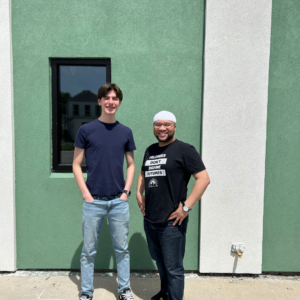
 Places of worship have abundant ways of filling the needs of their members and community. Masjid Al Mumineen, a mosque on the eastside of Indianapolis, is offering an ambitious slate of programs to build hope, health and well-being — with the participation of Talha Kahf, a member of CIC’s Interfaith Enrichment Corps IEC).
Places of worship have abundant ways of filling the needs of their members and community. Masjid Al Mumineen, a mosque on the eastside of Indianapolis, is offering an ambitious slate of programs to build hope, health and well-being — with the participation of Talha Kahf, a member of CIC’s Interfaith Enrichment Corps IEC).
At a recent meeting at Masjid Al Mumineen with Board Vice President Julius Ali Mansa, member Sara Alghani, and Talha, we learned about the community initiatives, both ground-breaking and fundamental, on offer.
- Mumineen is an Arabic word meaning “believers.” The newly-launched Mumineen Community Development Corporation (MCDC) is a stand-alone non-profit housed within the mosque. MCDC provides social services, reentry services, financial literacy programs, and youth development programs that elevate people out of poverty and into their full potential. Led by Founding Board President Mansa, MCDC just signed a contract with the City of Indianapolis to assist people re-entering society from the criminal justice system. “We’ll provide case management, wraparound services, and barrier busters to help those re-entering to be able to make rent payments, obtain copies of their birth certificates, and other things to get them back on their feet,” says Mansa.
- MCDC will soon launch peer recovery services to support those experiencing addiction or mental health challenges. Talha, about to complete his degree in social work at IUI, will use his active listening skills and complete a 30-hour training to serve as one of 10 certified peer support professionals. Conservative faith communities can sometimes minimize mental health concerns, but Masjid Al Mumineen is embracing the needs of its members and neighbors from a place of Islamic identity.
- It’s rare that Muslims who are deaf have access to the spoken messages of their faith. Using his skill with sign language, Talha has been able to interpret Friday jumuahs (prayer services) for the Deaf community. “Talha has been able to create equity in this space as an interpreter,” says Mansa. Talha explains: “I use a combination of American and Arabic Sign Language,” informed by a resource organization called Global Deaf Muslim USA. The filmed khutbahs (sermons) with Talha’s interpretations have drawn members of the deaf community to view the videos on the mosque’s Facebook page … and drawn them to attend services at Masjid Al Mumineen. “My favorite thing is to have conversations with ASL speakers after the services,” Talha says. And he is thrilled to increase his skill at signing (his minor in college) in the nuanced contexts of Black culture and Muslim culture. “For me, it’s a way of seeing my religion in my hands,” he says.
- Like many faith communities, Masjid Al Mumineen offers a food pantry. The SHARE Center is its own non-profit that includes a food pantry, job training and counseling. During Ramadan, Talha helped to organize the food pantry more like a store to make the monthly food distribution process easier.
- The Islamic Society of North America is working with Masjid Al Mumineen to set up a shelter for the unhoused and those fleeing from domestic violence in the Avondale Meadows neighborhood where the mosque is located. “We are working to be intentional about being inclusive of women, those with disabilities, and those who are transgender, as we retain our core Islamic identity,” says Mansa.
- Leaders at Masjid Al Mumineen will be taking part in the Indiana Black & Minority Health Fair June 27-30, sharing their insights on panels. And this fall, the mosque plans its own health fair/back-to-school event, with funds from the Strengthening Healthy Support Networks in Minoritized Communities project, a project funded by a three-year grant to CIC from IU Health’s Community Impact Investment Fund. Talha’s IEC/AmeriCorps term is also supported in part by this grant.
When a Muslim sees suffering, he or she shares the pain of that person with an open heart. CIC is proud to partner with Masjid Al Mumineen to support its ability to meet the health needs and boost hope for multiple communities.
Written by Anne Laker
EMBRACING THE WORLD’S FAITHS IN INDIANAPOLIS: JUDAISM
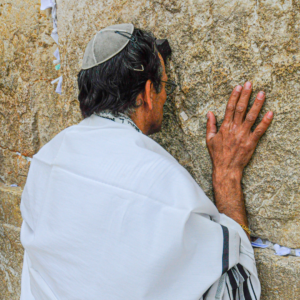 Judaism, the religion of the Jewish People, is the oldest of the three great monotheistic religions; Judaism, Christianity, and Islam. All three arose in the Middle East and are inextricably linked to each other. Christianity was born from within the Jewish tradition, and Islam developed from both Judaism and Christianity. Reconciling their differences, however, has unfortunately always been a challenging matter.
Judaism, the religion of the Jewish People, is the oldest of the three great monotheistic religions; Judaism, Christianity, and Islam. All three arose in the Middle East and are inextricably linked to each other. Christianity was born from within the Jewish tradition, and Islam developed from both Judaism and Christianity. Reconciling their differences, however, has unfortunately always been a challenging matter.
Throughout history, Jews have encountered hardships, hatred, and disasters; these have included invasion by both the Babylonian and the Roman empires, many periods of forced exile in and after the Middle Ages, massacres in the 19th century, and the horrendous Holocaust in the 20th century. Despite all this adversity, the Jewish faith and its people have miraculously survived through their flourishing diaspora in the United States and other parts of the world and a thriving homeland in the reborn State of Israel.
Judaism’s founding father was Abraham, born about 1800 BCE in or around Ur in Mesopotamia (modern Iraq). At God’s instruction, Abraham led his family into the land of Canaan in the eastern Mediterranean. Judaism teaches that God established a covenant, or sacred agreement, with the Jewish People; God promised Abraham, and his wife Sarah, numerous descendants who would form a great nation in Canaan if he and his family pledged their faith in God. This covenant between God and his followers is the essence of Judaism.
For the Jews, their one God is the source of all morality and goodness. God is so holy that even the divine name is too sacred to utter; instead, Jews use phrases such as ha-Shem (“the Name”) and Adonai (“my Lord”) to avoid committing blasphemy.
The first five books of the Hebrew Bible (equivalent to the Christian Old Testament) explain the Jewish Covenant. The first book (Genesis) is about the creation of the world, and God’s relationship with Abraham and his family. The second book (Exodus) tells the story of how God took Israel out of Egypt, how the Jews received the Torah at Mount Sinai, and contains the first code of law in the Torah. The fifth book (Deuteronomy) emphasizes that the covenant applies to all Jews everywhere.
It is expected of Jews that they will teach their children the commandments, stories, and traditions of the Jewish People. This instruction is important because it establishes the idea of handing down Jewish beliefs to succeeding generations. Unlike most faiths, Judaism is more than a religion; for it also involves belonging to a national group with an ethical, spiritual, and intellectual identity. Jews understand themselves to be part of a large family, and so they do not actively proselytize or seek converts.
The Torah contains 613 instructions (in Hebrew- Mitzvot), covering everything from food and clothing to rituals and festivals. Every synagogue has a copy of the Torah, hand-written on a scroll and kept in a cabinet called the Ark. Each Torah scroll is written with great care because the text must never be changed and so it must be transcribed accurately. The text is too sacred to be touched by hand. When a person reads from the Torah, he or she uses a special pointer to follow the words thereby ensuring that the text is not marked or chipped.
Judaism is a constantly evolving religious tradition. While the Torah is the first word, it is certainly not the last. Since the earliest times, rabbis have discussed and interpreted the words of the Torah. By 170 BCE, Jews began to write down what the Rabbis said. By the 6th century CE, all the legal discussions and stories were compiled into a multi-volume collection called the Talmud, which still forms the basis of how Judaism is practiced today. The Talmud contains three basic sets of instructions. First, it teaches what God requires of the Jews as the basis for a good life. Second, it informs Jews that God requires worship. Third, genuine kindness is highly important and it should be an active kindness in which all Jews help others, especially the weak, the elderly, and the sick.
Prayer lies at the heart of Jewish practice. When they pray, Jews cover their heads with a small skullcap called a “yarmulke” or a “kippa.” They also put on a “tallit” (prayer shawl). The ceremony of bar mitzvah, when a Jewish boy comes of age at 13 (the equivalent for girls is a bat mitzvah at the age of 12) involves reading a portion of the Torah in the synagogue and marks the point at which that individual promises to follow the commandments of God.
The Sabbath is the climax of the Jewish week. It begins at sunset on Friday and concludes at sunset on Saturday. It is an opportunity for rest, worship, and spending time with family or community. The Jewish year is punctuated with many festivals and solemn holy days. During Rosh Hashanah (New Year), Jews celebrate God’s covenant with Israel. Ten days into the New Year, Yom Kippur (the solemn day of atonement during which Jews fast and seek forgiveness for their sins), takes place. Pesach (Passover) remembers the time when Moses led the Jews out of captivity in Egypt.
Judaism has several branches:
Orthodox Jews have the strongest traditions of all the branches. Their Judaism was deeply rooted in Eastern Europe, but repeated persecutions there resulted in many moving to the USA and, later, to Israel. Orthodox Judaism requires both men and women to dress modestly and substantially cover their bodies.
Reform Judaism is a progressive branch that has adapted to the ideals of modern civilization. These include the abandonment of many of the old dietary laws and the adoption of new traditions such as the ordination of women rabbis. Conservative and
Reconstructionist Judaism embrace human progress but also uphold Biblical laws. They offer ways in which the laws can adapt, with every generation adding their views. These movements have proved popular, especially in the USA where around one-third of practicing Jews belong to these synagogues.
There are seven synagogues in Indianapolis; the three largest are the Indianapolis Hebrew Congregation (Reform) whose website is www.ihcindy.org, the Congregation Beth-El-Zedeck (Conservative and Reconstructionist) whose website is www.bez613.org, and the Congregation B’nai Torah (Orthodox) whose website is www.btorahindy.org. All offer opportunities to learn about Judaism.
In conclusion; what does it mean to be a Jew? It means many things: “To accept a Jewish identification is to embrace much more than belief alone…it is to accept that you are part of a history, tradition, and a people that emphasizes learning.” David J. Azrieli
Co-written by Freddie Kelvin and Rabbi Hal Schevitz
Interfaith Enrichment Corps visits sacred spaces
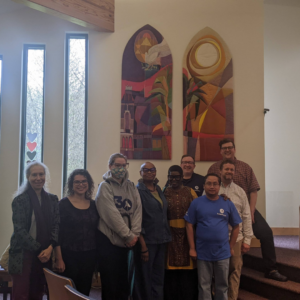 This year Interfaith Enrichment Corps (IEC) AmeriCorps members participated in a pilot Bridging Communities of Practice Project through the Service Year Alliance. As a part of this project, CIC was awarded funding to participate in online curriculum regarding expanding what it means to have “bridging” conversations. This was followed by “Applied Practice” where the IEC members have conversations with people they do not know practicing their listening skills. As celebration of this participation, and a chance for IEC members to further these practices, IEC members participated in Sacred Space Tours, which are integral to the IEC.
This year Interfaith Enrichment Corps (IEC) AmeriCorps members participated in a pilot Bridging Communities of Practice Project through the Service Year Alliance. As a part of this project, CIC was awarded funding to participate in online curriculum regarding expanding what it means to have “bridging” conversations. This was followed by “Applied Practice” where the IEC members have conversations with people they do not know practicing their listening skills. As celebration of this participation, and a chance for IEC members to further these practices, IEC members participated in Sacred Space Tours, which are integral to the IEC.
This year, we are taking opportunities to explore sacred spaces outside of Central Indiana. April 12 was an opportunity to explore sacred spaces in Columbus and Bloomington. Our trip began with the Interfaith Campus of Columbus which houses a Unitarian Universalist Church, a pagan community, a Jewish community, and a Hindu Temple. Our second stop took us to the Tibetan Mongolian Buddhist Cultural Center (TMBCC).
At the interfaith campus, IEC had the opportunity to speak with members of the community doing interfaith work in the Columbus community. After sharing their experience with interfaith work in Columbus, the members were able to have a conversation about the differences in doing interfaith work in urban and rural communities. There was a very real discussion about the reality of safety for
minoritized community members, especially in rural communities. Rev. Nic Cable shared his experience of creating safety and the
difference between real safety and the illusion of safety.
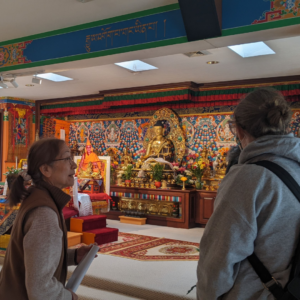 The TMBCC offered a space of rest. Members were able to explore the temple and hear from a member of the community about the significance of the sacred artwork. We were able to see a sand mandala that is preserved at the temple. This was very significant since most sand mandalas are deconstructed and sent out with intention into the world. The sand mandala at the temple was one for peace, which includes symbols from several world religions. While most of the day was rainy, the rain did clear long enough for members to explore some
The TMBCC offered a space of rest. Members were able to explore the temple and hear from a member of the community about the significance of the sacred artwork. We were able to see a sand mandala that is preserved at the temple. This was very significant since most sand mandalas are deconstructed and sent out with intention into the world. The sand mandala at the temple was one for peace, which includes symbols from several world religions. While most of the day was rainy, the rain did clear long enough for members to explore some
of the grounds. By turning the sutras (prayer wheels), members participated in a centuries old tradition of sending prayers of loving kindness into the world.
This Sacred Space Tour was a wonderful opportunity to reflect on what it means to do interfaith work and how that work is done in different places. I loved seeing IEC members explore and open up about their own experiences. It is through their bravery to have these conversations that interfaith work continues.
Written by Dorian Condre
Reflecting on My Journey: Highlights from My Internship at the CIC
 “This experience has not only broadened my horizons but has also reaffirmed my commitment to making a meaningful difference in the world.” ~ Nick Okoro
“This experience has not only broadened my horizons but has also reaffirmed my commitment to making a meaningful difference in the world.” ~ Nick Okoro
As I wrap up my internship journey with the Center for Interfaith Cooperation (CIC), I’m filled with a profound sense of gratitude and reflection. This experience has been a transformative one, marked by meaningful encounters, insightful discussions, and invaluable lessons learned.
One of the most enriching aspects of my internship was the opportunity to delve into a side project focused on evaluating the nonprofit business model against a for-profit structure. Conducting this deep dive allowed me to gain a deeper understanding of the intricacies involved in sustaining a nonprofit organization like the CIC. Exploring how we can adopt practices to ensure sustainable funding was not only enlightening but also deeply rewarding. It sparked my interest in philanthropy and opened my eyes to the importance of innovative
approaches in addressing funding challenges.
Throughout my internship, I had the privilege of participating in a variety of impactful events and initiatives. From attending the screening of “Dalya’s Other Country” as part of the New View Short Series to facilitating discussions at the Indiana Multifaith Network conference, each experience has left an indelible mark on me. These moments of engagement and connection have reinforced my belief in the power of interfaith dialogue and cooperation in fostering understanding and harmony within our communities.
One event that particularly stands out is the Violence Reduction Workshop. Engaging in honest and intellectual discussions about the violence epidemic in Indianapolis was both eye-opening and inspiring. It highlighted the urgent need for collective action and underscored the vital role that organizations like the CIC play in driving positive change.
As I reflect on my journey with the CIC, I am filled with a deep sense of gratitude for the guidance, support, and mentorship I received throughout my internship. This experience has not only broadened my horizons but has also reaffirmed my commitment to making a meaningful difference in the world. Moving forward, I am excited to continue exploring opportunities to contribute to the important work of building a more inclusive, compassionate, and peaceful society.
In closing, I want to express my heartfelt appreciation to everyone at the CIC for their unwavering dedication and passion. It has been an honor to be part of such a vibrant and purpose-driven community. I am grateful for the friendships formed, the knowledge gained, and the memories created during my time here. As I embark on the next chapter of my journey, I carry with me the invaluable lessons learned and the profound impact of this internship experience.
Written by Nick Okoro
EMBRACING THE WORLD’S FAITHS IN INDIANAPOLIS: SIKHISM
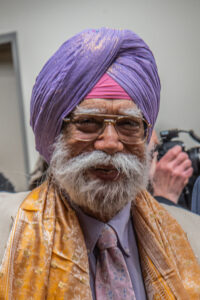 “Scriptures proclaim that God places all ideas and thoughts in our mind, hoping that we are listening and making His planned lessons for us a reality.” ~ K.P. Singh
“Scriptures proclaim that God places all ideas and thoughts in our mind, hoping that we are listening and making His planned lessons for us a reality.” ~ K.P. Singh
In the words of the distinguished Sikh and Indianapolis resident K.P. Singh: “Scriptures proclaim that God places all ideas and thoughts in our mind, hoping that we are listening and making His planned lessons for us a reality.” Sikhism believes that there is one eternal God, who is formless and therefore impossible to describe. Because God is regarded as the embodiment of truth, Sikhs greatly revere achieving a personal experience of Him.
Sikhism is a monotheistic faith and is the world’s fifth-largest religion with more than 25 million adherents. While most followers live in India, there are sizable communities of devout Sikhs in the United States, Canada, and England. Sikhism follows the teachings of ten human Gurus, as well as the Guru Granth Sahib, a collection of scriptures written by those Gurus.
Its founding Guru was Nanak, who was born in 1469, near Lahore, in what is now Pakistan. When he was 30, Nanak had a mystical experience after bathing in a local stream. Following this, he traveled widely, teaching the message that there is only one God and subscribing to the doctrines of karma and rebirth.
Eventually, Nanak settled down and founded a village called Kartarpur in the Punjab. His followers began calling him Guru Nanak, and they became known as Sikhs (Sanskrit for disciples). This village became the heart of the Sikh community. Just before he died, Guru Nanak named one of his followers to succeed him and called him Angad (a name that means “limb” or “part of me”). Angad became the first of nine Gurus who were to lead the Sikh community: all made significant contributions, whether spiritually or by displays of bravery. The fourth Guru (Ram Das) founded the sacred city of Amritsar in northern Punjab, and the fifth Guru (Arjan) compiled the first edition of the sacred book, the Granth Sahib.
In 1699, the tenth Guru, Guru Gobind Singh, founded the Khalsa. This was a major transformational event that established high moral standards in the evolution and history of the Sikh faith. Before his death, Guru Singh announced that he would be the last human Guru and that, going forward, the holy book – the Granth Sahib – would be the True Guru. Sikhs rely on these scriptures as their spiritual guide and consider that they contain the answers to all questions relating to religious practice and morality.
As with other faiths of Indian origin, Sikhs believe that the law of karma (the process of moral cause and death) influences how we are reborn after death. This process entails five stages of existence, each on a higher moral plane than its predecessor. Sikhs consider all people to be equal, irrespective of their religion, gender, caste, creed, or status. Sikhism is distinct among world religions in that its scriptures enshrine sacred writings of venerable Teachers of other faiths. This is consistent with their belief that all religious people worship essentially the same God.
The ethics of Sikhism are based on awareness of five key virtues; truth, contentment, service, patience, and humility, as well as the avoidance of five vices; lust, anger, greed, worldly attachment, and conceit. By fulfilling all of the above, Sikhs hope to achieve God’s grace. Sikhs are expected to help those in need, whether followers of their religion or not. Initially, Sikhs were known for their bravery and agricultural pursuits but today they are actively engaged in many professions.
Throughout their history, the Sikhs have encountered many problems. They were strongly opposed by the Mughal rulers of India who, in 1716, crushed their power. Despite a brief period of a united Sikh kingdom, their community was markedly disrupted, and this continued under British rule until 1947.
Sikhs campaigned for control of their homeland and, in 1919, the Amritsar Massacre took place; in which British troops fired without warning on a peaceful protest of about 10,000 unarmed Sikhs, killing about 400 and wounding another 1,000. After India gained independence in 1947, the Sikhs were denied their homeland. Sikh resistance increased and this led to Operation Blue Star in 1984, during which Indian government troops opened fire on Sikh separatists inside the Golden Temple in Amritsar and other temples across Punjab, with much resultant loss of life.
In more recent times, the Sikhs gained increasing respect both in India and around the world and Punjab finally became a peaceful state with its predominantly Sikh population. Relationships between Hindus and Sikhs have improved, even to the extent that intermarriages occur with some frequency.
The main Sikh Gurdwara (temple) in Indianapolis is the Gurdwara Sikh Satsang, 10950, Southeastern Avenue. Its website is: www.gurdwarasikhsatsang.org. Anyone is welcome to attend services there. The Sikh community supports local events, humanitarian projects, and interfaith initiatives.
- P. Singh is a renowned architect, artist, and a prominent community leader who was a Founding Member of the Sikh Satsang temple, and of the International Center of Indianapolis. KP was honored as Interfaith Ambassador of the Year by the Center for Interfaith Cooperation in 2016.
Written by Freddie Kelvin
Meet iec Member, Dr. Joni Clark
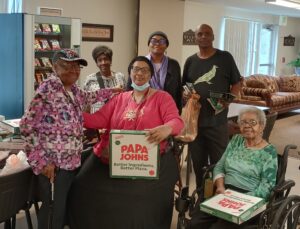 “I have not learned to stop asking questions…and that gets me in trouble,” she says with a wink and a grin. ~Joni Clark
“I have not learned to stop asking questions…and that gets me in trouble,” she says with a wink and a grin. ~Joni Clark
A crone, Joni D. Clark will tell you, is not a sinister old lady. A crone is a mature woman who channels the energy and wisdom of her life of 56 years or more. “To crone” is a verb, and Joni is croning, big-time. “That’s when the lid comes off and you realize you have many gifts to give.”
As a member of CIC’s Interfaith Enrichment Corps, Joni is marshaling her gifts in the service of supporting those in need: the mentally ill, the hungry, vulnerable women and children. While giving, she is also seeking. “I have not learned to stop asking questions…and that gets me in trouble,” she
says with a wink and a grin.
Image to the right: Joni Clark stands with clients of “Cover Me”
It’s these thirsty questions that have propelled her on a winding, criss-crossing faith journey that continues onward through her work at CIC, where she chairs the Interfaith Alliance for Mental Wellness committee, organizes health fairs, and recently set up a fascinating discussion about the role of symbols in five faith traditions. What, exactly, has prepared Joni for now?
She was raised in Mount Olive Missionary Baptist Church in Indianapolis, where as a child, she loved to be to the sanctuary alone with sunlight streaming through stained glass, while her grandmother rehearsed with the choir. “I loved feeling the presence of something larger than myself,” she recalls.
So too, she spent summer hours under the shade of her grandparents’ backyard, “lying on my back listening to the trees.” Again, she enjoyed the presence of something larger than herself. “All things have energy, even rocks, and I knew we needed to tap into it. I wanted to be a geologist! But back in the 1970s, black women were not geologists,” she says with an eye roll.
Once at college, she continued to commune with nature. “I was up at sunrise, walking the campus. I would cut across to spaces with trees so I could listen and take my shoes off. By then I knew the presence I was looking for was God. I joined a gospel choir on campus. It was there that I learned about speaking in tongues.”
Curious about charismatic congregations, Young Joni experienced three different kinds of pentecostal worship. After butting up against barriers that prevented her from answering her call to preach, and rigid ideas that devalued her connection to the earth, Joni migrated to the
African Methodist Episcopal (AME) church, which appealed to her intellectual curiosity. She was called to preach and pursued her MDiv at the Interdenominational Theological Center in Atlanta.
Here she was introduced to the womanist theology. Joni shares a definition of womanist crafted by the great writer Alice Walker: “a black feminist or feminist of color…one who wants to know more and in greater depth than is considered ‘good’ for one…capable…committed to survival and wholeness of entire people.” A crone!
But once back at her AME congregation, Joni again was met with patriarchal and political limits that devalued her knowledge and reduced the space she could occupy as a female. While the Book of Genesis describes Eve as created from Adam’s rib, Joni and her friend joked that “we don’t like being riblets.”
So she turned her attention to practical, hands-on ministries in the community. She worked as a campus minister at Indiana State University, where she started a food pantry, got shoes for students who had none, and organized a health summit for Black women. Moving to Bloomington, she founded a non-profit called Cover Me. “It’s a mentoring support group for girls and women, some with mental health challenges,” she says. “We provide gas cards or anything they need to get back into life.” (She earned a Ph.D. in philosophy at the same time).
If that’s not enough, Joni’s latest venture is See Me Eat. Every week, she collects unclaimed pizzas from Papa John’s and leftover baked goods from Panera, along with fruits and vegetables, and delivers them to the senior apartments where her late mother lived. “When giving,” she says,” you must be determined to do it with honesty, without manipulation, control or power as your agenda. Otherwise, it’s just about you.”
This is wisdom Joni the Crone learned from years of witnessing. Today, she sits in gratitude for her membership in the Interfaith Enrichment Corps. “This is a place to ask my questions!” she says. “I cannot say how much this AmeriCorps cohort has meant to me. I would have never had a chance to meet Muslims, or find sisters who share my interest in herbal and alternative medicine! CIC is just a great sacred space for gentle souls to come and figure it out,” Joni says.
With her obsidian bangles jingling, this powerful 65-year-old crone knows what matters, and how to live it out: “I believe in the power of a strong, loving community and in my responsibility to care for and nurture that community, starting with my own self care.”
Written by Anne Laker
EMBRACING THE WORLD’S FAITHS IN INDIANAPOLIS: JAINISM
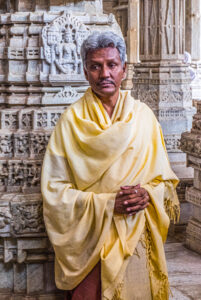 “Jainism is an austere and truly impressive religion, and I was fully at ease with myself while within this shrine and
“Jainism is an austere and truly impressive religion, and I was fully at ease with myself while within this shrine and
its dedicated followers.” ~Freddie Kelvin
Jainism is one of the longest-established religions of India. Although it has only four to five million adherents, it has had a disproportionate influence on the modern world because of its overriding philosophy of non-violence (ahimsa). For example, Mahatma Gandhi was heavily inspired by the Jain principle of ahimsa and adopted it as the cornerstone of non-violent civil disobedience which eventually led India to gain full independence from British rule in 1947. There are approximately 200,000 followers of the faith in the United States and Canada.
The religion has no single founder. Its followers believe that their faith was revealed to them by a number of leaders called tirthankaras (or jinas), the most recent of whom was Mahavira who lived in the 6th century BCE. At 30, Mahavira left all his possessions and family behind and embarked on the life of a wandering ascetic in pursuit of spiritual awakening and liberation. After 12 such years, he finally achieved enlightenment. He then travelled extensively across India, and acquired many disciples. His teachings form the basis of the Jain scriptures.
Jains do not believe in a supreme creator god; however, they do recognize five levels of supreme beings who can help believers along their spiritual path. At the head of this spiritual hierarchy are the tirthankaras, from whom Jains’ original teachings arise. As in other Indian religions, Jains believe in a cycle of deaths and rebirths, and also that karma (one’s actions) is a kind of physical substance that attaches to a person’s soul and needs to be removed before this cycle can be broken.
Jains try to follow the spiritual path of the Three Jewels; Right knowledge, Right faith, and Right conduct. There is a fourth Jewel, that of Asceticism, which is very restrictive and includes the renouncement of relationships with other people. Lay Jains, however, are not subject to this requirement. Nevertheless, it is expected that they will renounce violence, eat only vegetarian food, and choose a career that does not involve the deliberate destruction of life. As a result, many occupations are banned. This applies not just to farming but also to other forms of work that include, for example, carpentry because sawing timber injures wood. Consequently, acceptable occupations for Jains are limited to fields such as trade, finance, teaching and art.
The principle of non-violence in Jainism is taken much further than in other faiths because even lower forms of life are respected. For example, Jain monks carry a small brush to move insects away from their path as they walk and they strain drinking water in order to avoid swallowing any tiny organisms. The monks also shun the use of lamps so that moths and other insects do not perish in their hot light.
 Several years ago, I was fortunate enough to visit the magnificent 600-year-old Jain temple in Ranakpur, India. I have never experienced a temple so serene and breath-taking. Its main hall was supported by 1,444 pillars, each of which contained highly intricate carvings. But it was not so much the stunning architecture as the solemnity and calmness of the Jain devotees within the temple that made me feel so respectful and filled with awe. Jainism is an austere and truly impressive religion, and I was fully at ease with myself while within this shrine and its dedicated followers.
Several years ago, I was fortunate enough to visit the magnificent 600-year-old Jain temple in Ranakpur, India. I have never experienced a temple so serene and breath-taking. Its main hall was supported by 1,444 pillars, each of which contained highly intricate carvings. But it was not so much the stunning architecture as the solemnity and calmness of the Jain devotees within the temple that made me feel so respectful and filled with awe. Jainism is an austere and truly impressive religion, and I was fully at ease with myself while within this shrine and its dedicated followers.
The most basic form of Jain worship is called darshan. This involves making eye contact with the image of a tirthankara, often while reciting a mantra (a sacred sound or verse). Cleaning these images, anointing them with saffron and decorating them with flowers enables the worshipper to come closer to their supreme beings. Lay Jains try to practice as many of their religion’s daily rituals as possible. These include a 48-minute time for meditation and prayer that aims to bring calm to the devotee who can then become at peace with the world.
Jains place considerable emphasis on fasting at key points in the calendar. Some of the Jain festivals are adapted from Hinduism. These include the festival of Diwali, during which they celebrate the enlightenment of Mahavira (rather than the Hindu goddess Lakshmi). Marriage ceremonies can be elaborate, but the couples-to-be are encouraged to ensure that the wedding rituals are performed with a seriousness that befits the occasion.
The Jain Center of Central Indiana (JCCI) is located at 3350, N. German Church Rd, Indianapolis, IN 46235. The JCCI is part of JAINA: the Federation of Jain Associations of North America whose mission is to preserve, practice and promote Jain Dharma and the Jain Way of Life. More information about JAINA can be obtained by contacting info@jaina.org.
Written by Freddie Kelvin
meet iec member: nina
 After growing up without caring parents or a real home, serving six different prison terms, and bearing fourteen children, Nina Porter is devoted to one thing: service, especially to mothers in need.
After growing up without caring parents or a real home, serving six different prison terms, and bearing fourteen children, Nina Porter is devoted to one thing: service, especially to mothers in need.
In her early life, “‘love’ was absent, or it hurt,” Nina says. She had her first child at 17. “I had never felt love like when I was pregnant — it automatically makes you want to protect and provide.” But without money or stability, she was in and out of the war zone of prison, and in and out of relationships. “When you’re pregnant in prison, you have the baby and they often take it from you. Or, you don’t learn how to physically bond with your child.” Plus, once a new mother is out of prison, one free night in a hotel room might be all the transition help she gets.
Experiencing this injustice, Nina felt called. Over the last decade, with the persistent support of her mentors — pediatrician Dr. Amy Metheny and neuroscientist Dr. Jack Turman, Jr. — Nina transformed herself into an advocate for incarcerated mothers by taking a leadership role in an initiative she co-founded called Mothers on the Rise. Soon after, her co-founder invited Nina to become an AmeriCorps member.
As her new life of service was emerging, Nina questioned herself and her abilities. “I kept on thinking to myself, can I do any more, can I do any better? Do I level off or do I level up? Is this legit? When I started to serve other people, because people had served me … then I knew how good it felt to help, and I knew I wanted to do more.”
Twelve years later, thanks to Nina and others in the prison reform movement, there is now a pediatric unit and a play area in the Indiana Women’s Prison. New mothers reentering society can access a legal team, social worker, and OB-GYN nurse. They also receive $1,000 worth of hygiene supplies and clothes upon reentry to society. For her record of service to incarcerated moms, Nina received a 2023 Serve Indiana Awards for Excellence National Service Member Award.
AmeriCorps has been Nina’s platform for focused service to the community. In her fourth AmeriCorps term with CIC’s Interfaith Enrichment Corps program, Nina is serving a new community: people in need on the Far Eastside of Indy, through an ingenious enterprise called Laundry & More. Every Tuesday at the Post Road Laundromat, people in need get coins and detergent to launder clothes and bedding at no cost. While the washers spin, they can also access health care such as immunizations, housing referrals, job training resources, and a healthy bite to eat, prepared by volunteers.
On the day I visited, a large number of Haitian families were utilizing the program, which began as a ministry of the Servants of Christ Lutheran Church, but just became its own non-profit. Nina circulated the room with a clipboard, noting which machine held whose laundry and sharing encouragement with neighbors. The program serves 50 families per week with about $500 in quarters and nine devoted volunteers. Laundry & More just received a $100,000 Elevation grant from the Central Indiana Community Foundation, for staffing and training.
Laundry, at Laundry & More, is not just laundry. If a person can’t wash their clothes and bedding, they are at greater risk for infection, disease, and being ostracized. Neighbors who participate in Laundry & More can expect to hear and be heard, to know and be known. The support works. After a mini job fair last March, eight people reported getting job interviews. George Bueltmann is the interim executive director of Laundry & More. “We do have a prayer at the beginning,” he says. “But we are not proselytizing. We simply want to help people who need a lot of help. As Jesus said, ‘what you do for least of us, you do for me.’”
In her work at Laundry & More, Nina naturally gravitates toward the mothers in the room, with an offer of extra compassion. “If they’re here as refugees, Haitian moms cannot get assistance such as WIC (Women, Infants, and Children nutrition program).” So Nina helps them with referrals to other agencies. She’s also gotten curious about Haitian Creole language and culture as a way to serve these neighbors better.
For a woman who rose from the ashes of her previous life, and is still raising three kids under age 12, so much seems possible. “Nobody thought I’d make it this far, not even me,” says Nina. Helping the lonely and the traumatized is what gives her life meaning. “I’ll never stop serving,” she says. “That’s the piece that fulfills.”
Written by Anne Laker
Statements against Antisemitism and Islamophobia
The Center for Interfaith Cooperation, representing a diverse array of faith communities across central Indiana, is dedicated to upholding the values of respect, dignity, and celebration of religious diversity within our great state. We emphatically renounce occasions where religion is used to encourage and justify antisemitism, Islamophobia, racism, white supremacy, war, discrimination, genocide, sexism, violence, poverty, and any other form of bigotry and oppression. We feel it is paramount for others to speak out when any one group is attacked by word or deed. The recent antisemitic graffiti in Carmel and the Islamophobic misinformation spread at the Indiana State House are examples of the insidious hate that is antithetical to the teaching of all religion, and they denigrate our shared humanity. We stand in solidarity with the statements issued by the Jewish Community Relations Council and the Indiana Board of Rabbis in response to these incidents. We are committed to collaborating with people of goodwill from all faiths to promote greater understanding and cooperation across Indiana.
From Indianapolis Jewish Community Relations Council:
The Indianapolis Jewish Community Relations Council, Jewish Federation of Greater Indianapolis, and ADL Midwest are appalled by the graffiti of swastikas and Star of David in the snow of the house of a Jewish family in Carmel. This hate has no place in Indiana. Carmel police and our partners with Safe Indiana are aware and investigating. With the shocking rise in antisemitism in the past four and a half months, we urge you to continue to be vigilant. Please report any incident at: https://www.jewishindianapolis.org/incidentreporting
From the Indiana Board of Rabbis:
It has come to our attention that the Indiana Muslim Advocacy Network (IMAN) was accused of being in league with the terrorist organization Hamas. The members of IBOR unequivocally state that this is an offensive and hateful remark. Conflating the Muslims of Indiana and America with the actions of terrorists is not only wrong, but against every value of our faith.
The Indiana Board of Rabbis (IBOR) categorically condemns all forms of hatred, be it in word or action. While the Jewish and Muslim communities differ on some issues, we do so with civility and love. We can disagree and still be brothers and sisters. Judaism upholds the concept of B’tzelem Elohim, that all people are created in the image of God… ALL people regardless of race, religion, creed, social status, sexual orientation, or gender identity. Islamophobia and antisemitism are wrong. The path to peace is acknowledging each other’s humanity with civility, love, and compassion.
Rabbi Meir Bargeron, co-chair IBOR
Rabbi Roxanne J.S. Shapiro, co-chair IBOR
Rabbi Adam Bellows
Rabbi Brian Besser
Rabbi Jordana Chernow-Reader
Rabbi Karen Companez
Rabbi Michael Friedland, DHL
Rabbi Justin Kerber
Rabbi Brett Krichiver
Rabbi Gary Mazo
Rabbi Bruce Pfeffer
Rabbi Dennis C. Sasso
Rabbi Sandy Eisenberg Sasso
Rabbi Benjamin Sendrow
Rabbi Hal Schevitz
Rabbi Aaron Spiegel
Rabbi Faedra Weiss
Rabbi Lew Weiss
Embracing the world's faiths in Indianapolis: buddhism
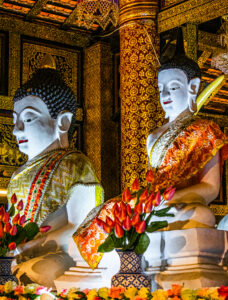 Marc Preston Moss will be the first to tell you that Buddhism saved his life. In fact, he’s actually written a book about his journey “from suicidal depression to ever-increasing and lasting joy” titled “Law of Reflection”. Now a practitioner of Buddhism for over 20 years, Marc teaches an introductory Buddhist philosophy course at the Indiana Buddhist Center (of which is he President of their Board of Directors), speaks publicly at the Indiana Buddhist Center, and has traveled to India four times to study his faith. I will be forever grateful that he invited me to his home and was kind enough to grace me with an invaluable understanding of the 2,500-year-old religion of Buddhism.
Marc Preston Moss will be the first to tell you that Buddhism saved his life. In fact, he’s actually written a book about his journey “from suicidal depression to ever-increasing and lasting joy” titled “Law of Reflection”. Now a practitioner of Buddhism for over 20 years, Marc teaches an introductory Buddhist philosophy course at the Indiana Buddhist Center (of which is he President of their Board of Directors), speaks publicly at the Indiana Buddhist Center, and has traveled to India four times to study his faith. I will be forever grateful that he invited me to his home and was kind enough to grace me with an invaluable understanding of the 2,500-year-old religion of Buddhism.
With more than 500 million followers, Buddhism is one of the world’s major faiths. By stressing the benefits of wisdom and inner peace, Buddhism continues to gain adherents around the globe including in regions as widely separated as the American West and China.
Buddhism was founded in the 5th century BC by Siddhartha Gautama. who was born in present-day Nepal into a wealthy family, so much so that he had, at his disposal, three palaces and 40,000 dancing girls. Upon abandoning this princely background at the age of 29, he was shocked when he experienced The Four Sights. These were life-changing encounters with an elderly man, a sick person, a dead body and a holy man seeking to understand truth.
He then spent years living the austere life of an ascetic, hoping to find a solution to the inescapable sufferings that he had witnessed. This left him so weak that he fell into a faint and nearly died. Realizing that both indulgence and abstinence were futile, he decided to follow a “middle way” between these two extremes.
Consequently, he entered a period of deep meditation which eventually led him to experience Enlightenment. He now became the Buddha, the Awakened One. This Enlightenment is the centerpiece of the Buddhist faith. The Buddha now began to teach the Four Noble Truths to help humanity understand suffering; namely, suffering is an inherent part of human existence, it originates in desire, it can be eliminated by achieving detachment, and the way to end this suffering is the Noble Eightfold Path. This path guides individuals toward a life of moral virtue, mental discipline, and wisdom, and requires very intense self-effort.
The Buddha rejected the idea of an eternal soul, and taught that life is cyclical (samsara), with an endless number of births and rebirths. These cycles are driven by one’s actions in the current life (karma) which can either relieve or bring about suffering in a subsequent life. Nirvana represents the state of liberation from these cycles of suffering.
Buddhism drew its lifeblood from Hinduism, but radically differs from this and many other religions in that it is devoid of authority, tradition and the supernatural. Buddhism lacks a true creation myth, and is nontheistic. Meditation, the practice closest to traditional forms of worship, may take place in the home as well as in the temple.
The so-called Three Jewels of Buddhism are: the Buddha, the Dharma (his teaching) and the Sangha (the community of monks, nuns and lay people). As the Buddha neared his death, he emphasized that the Sangha should govern itself and all decisions, including who would be his successor, were to be made democratically by a simple majority of the monks present.
There are three main branches of Buddhism. Theravada Buddhism, which emphasizes personal enlightenment, is dominant in Southeast Asia, especially Thailand, Myanmar, and Sri Lanka. Mahayana Buddhism, instead of seeking personal enlightenment, aims to attain enlightenment in order to help free all beings from suffering. It is popular in Northeast Asia, especially China and Japan. Vajrayana Buddhism is an offshoot of Mahayana Buddhism that is widely practiced in Tibet.
In the deeply informed words of Marc Preston Moss: “Buddhism is the study of cause and effect on gross, subtle and very subtle levels through science, philosophy and practice for individuals on their journey towards self-actualization.”
If you are interested in learning more about Buddhism or the Indiana Buddhist Center, the only Tibetan Buddhist Dharma Center in the lineage of His Holiness the 14th Dali Lama within the Indianapolis metropolitan area, you can visit their website at www.indianabuddhist.org/ where you’ll find a schedule of events, recorded teachings, and visitor information.
Freddie Kelvin, Author of “Urban Nomad”
www.engagingauthor.com
Jennifer Neer, Contributing Author
Remembering Interfaith Pioneers Lynn and Bill jackson
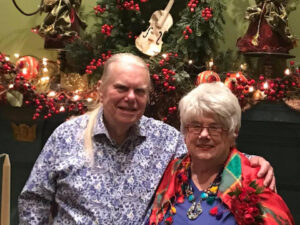 “We all owe a debt of gratitude for their courageous and pioneering work.” ~ Charlie Wiles, Executive Director, Center for Interfaith Cooperation
“We all owe a debt of gratitude for their courageous and pioneering work.” ~ Charlie Wiles, Executive Director, Center for Interfaith Cooperation
Central Indiana is a more welcoming and inclusive place thanks to the passion, dedication, and generous spirit of Lynn & Bill Jackson. Lynn passed away on January 4 and Bill followed on January 11.
Long-time friend and fellow member of the Fishers Multifaith Community for Compassion Muzaffar Ahmad described Lynn and Bill as “champions for peace, love, and compassion for all.
They made immense contributions to interfaith activities by including groups from diverse backgrounds and making so many positive connections in central Indiana. Lynn played a key role in setting up the Fishers Multifaith Community for Compassion, insisting the words community and compassion were included in the name. Love and compassion were key characteristics of Lynn and Bill’s lives.”
Betty Brandt, a long-time friend and colleague, attributes much of the amazing interfaith work at St Luke’s UMC to Lynn Jackson. “Over the years, St. Luke’s has hosted a Buddhist Mandala, Iftar dinners, a Muslim fashion show, interfaith art exhibits, and many other events celebrating central Indiana’s religious and cultural diversity.” Betty explained that Lynn grew up in the Jim Crow south where she learned to have a heart for the “other”. “She knew firsthand the negative impact of excluding people and was always reaching out her hand whenever she could to be inclusive. At different times of her life, Lynn would reach out to different people who were being marginalized due to their race, faith, ethnicity, or national origin. Bill and Lynn traveled extensively, and they chose destinations off the beaten path which deepened their appreciation for people from all backgrounds.” Betty also talked about Lynn’s affection for all things gaudy. “Texas gaudy was Lynn’s email address, and that really captured her style.” Betty shared fond memories of parties “where everyone was encouraged to dress as gaudily as possible. Lynn would even give away costume jewelry and connect with people by simply providing permission to have fun!”
CIC executive director, Charlie Wiles, mentioned how generous Lynn and Bill were in supporting the Interfaith Banquet and Festival of Faiths. “Lynn was always the life of the party and fun to work with. They will be dearly missed. We all owe a debt of gratitude for their courageous and pioneering work.”
Here are links to Lynn and Bill’s obituary:
https://www.dignitymemorial.com/obituaries/indianapolis-in/lynn-jackson-11611221
https://www.dignitymemorial.com/obituaries/indianapolis-in/william-jackson-11622156
A Celebration of Life is planned for Saturday, March 16, at 2:00 pm in the St. Luke UMC Sanctuary with a reception following in Fellowship Hall.
Welcome, IEC Member David
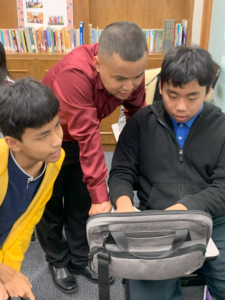 “I have had blessings on top of blessings, so I want to share them. If not me, then who?”
“I have had blessings on top of blessings, so I want to share them. If not me, then who?”
The day after he finished preschool in his native Burma, 6-year-old David Hauhulh’s family fled the country. Life wasn’t easy for Christians in a country run by a militarized government persecuting people for their religion. “My father didn’t want his children to live through that, with no choices for how to thrive,” David explains. The family migrated to Malaysia, and a few years later arrived in the U.S. in 2011, when David was nine. The whole family was faced with learning an utterly new language and culture.
Fast forward to today. David is a role model — a job he takes very seriously — for the next generation of Burmese immigrants living on the southside of Indianapolis. As a member of CIC’s Interfaith Enrichment Corps, David shares his gifts every week at Hope for Tomorrow, a non-profit that empowers Burmese refugees toward a hopeful, successful future.
On the afternoon I visit the Hope for Tomorrow offices, David is awaiting the arrival of two dozen middle school students. As the evening unfolds, he will help them with their homework, pay them quality attention, and pull off the trick of keeping them focused while also letting them blow off steam. The youth clearly adore him. “One mother said to me, ‘You’re the only person my son wants help from.’ It’s because I treated him like a young adult,” David surmises. [In nel tuk is the Chin phrase, meaning “comfortable with you.”]
Not everyone has a knack for working with ‘tweens and teens. “It was my Sunday school teacher who made me want to teach,” he says. “I like to see the kids’ mental development. I like to figure out what is best for a student: a stern or friendly approach?”
With the students, David is focused on two things: helping them interact with each other in better ways, and instilling the value of academic achievement, based on his own experience adapting to the U.S. education system. “I started out at a high school that didn’t have very high academic standards,” he says. “When it’s not valued at school, and parents can’t help at home, then what?”
David transferred to Plainfield High School where standards were indeed higher. He is now a 21st Century Scholar studying business administration at IUPUI with a full-time courseload. When an IEC/AmeriCorps position at Hope for Tomorrow (HTF) was offered to him, he decided to say yes, inspired by the vision of Executive Director Justin Thang. [A Community Impact Investment Fund grant from IU Health enables David’s work at HFT].
“I have had blessings on top of blessings, so I want to share them. If not me, then who?” David says. He is named for the courageous shepherd’s son in the New Testament, a name that means “beloved of God.” His family name, Biak Sui Lian, means “if you worship God, you will be rich with gold.” David was born in the Falam township of the Chin state in northwest Burma, home to the Lai mi people.
In Burma, practicing Christianity makes a Chin person a target for forced labor and abuse by government soldiers. Indiana is a refuge where David can freely practice his faith. “Our Chin community is very big on Christian faith,” he says. “That’s how we get to know each other, by asking ‘What church you go to?’” David is a proud member of Falam Baptist Church of Indiana near the University of Indianapolis. “In front of the church is a big circle of flags of countries represented in the congregation,” he says.
While visiting Hope for Tomorrow, I met Biak Chin Rem, David’s colleague in supporting the students. She too came to the U.S. at age nine, and is now an elementary school teacher who helps Burmese parents navigate the American educational system. “I hope the kids know what their parents have gone through in order for them to be here,” she says. “It’s a blessing to be here, which should be a big motivator to do well.”
Rem and David admit that youth work can be a tough job mentally. The Hope for Tomorrow team sometimes lingers after the kids have gone, reassuring each other and processing what they’ve observed. They have in common a devotion to mentorship.
“While I am with AmeriCorps,” David says with determination, “my mission is to focus on preparing the kids for their futures. This work has opened my eyes and motivated me to do more for my community to better their lives, helping people in our community, and beyond.”
Written by Anne Laker
Health fair creates conversation around mental wellness from an interfaith perspective
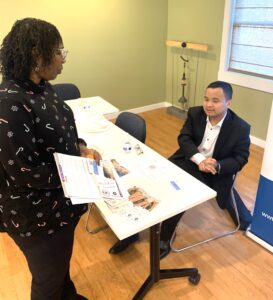 If you are Muslim or Christian, if you are Black or Burmese, does “wellness” mean something universal, or something distinct? This query is at the forefront of CIC’s Strengthening Healthy Support Networks in Minoritized Communities project, co-led by the IU Health Congregational Care Network, and funded by a Community Impact Investment Fund grant from IU Health.
If you are Muslim or Christian, if you are Black or Burmese, does “wellness” mean something universal, or something distinct? This query is at the forefront of CIC’s Strengthening Healthy Support Networks in Minoritized Communities project, co-led by the IU Health Congregational Care Network, and funded by a Community Impact Investment Fund grant from IU Health.
The question of the cultural meanings of wellness is playing out in the daily work of CIC’s Interfaith Enrichment Corps (IEC). IEC AmeriCorps members are offering pathways to wellness everyday at the sites they serve. For example: David Hauhulh helps Burmese (Chin) youth achieve academically. Nina Porter works to connect Haitian refugees with support. Delilah Harris helps cancer patients find healing resources. Rashidah Abdulhaqq helps urban kids and seniors access the benefits of community gardens.
This theme of wellness from a cultural angle was on full display at the December 13, 2023 Interfaith Enrichment Corps Health Fair, held at Cancer Support Community. IEC members exchanged ideas and tools for culturally-specific wellness resources. For example, www.findhelp.org is a national site for finding free or reduced-cost resources like food, financial assistance, and health care, with only a zip code required. “I always keep this tab open in my laptop when helping clients,” says IEC member Delilah. “Today I learned how it’s accessible to readers of many languages.”
Part of the goal of the Strengthening Healthy Support Networks in Minoritized Communities initiative is to explore unmet health needs of communities of culture and of faith — especially mental health. To that end, CIC Program Director Josih Hostetler is inviting everyone to share their opinions in a short survey. “We’re especially interested in how youth define wellness in their communities of faith,” he says.
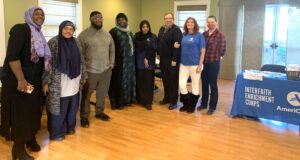 The Interfaith Alliance for Mental Wellness (IAMW) will use the information received through the to develop monthly programming in 2024. It’s all about 1)increasing good health outcomes for people of all faiths; and 2) growing trust and mutual interfaith understanding. Both ingredients for a strong social fabric.
The Interfaith Alliance for Mental Wellness (IAMW) will use the information received through the to develop monthly programming in 2024. It’s all about 1)increasing good health outcomes for people of all faiths; and 2) growing trust and mutual interfaith understanding. Both ingredients for a strong social fabric.
Written by Anne Laker
Say Hello to IEC Member, Delilah
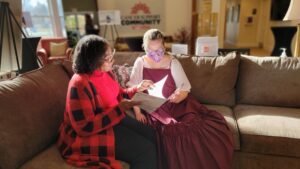 Community comes in many forms, and social workers — like the Delilah of the future — help ensure people in need have a community to enable their endurance, and their resilience.
Community comes in many forms, and social workers — like the Delilah of the future — help ensure people in need have a community to enable their endurance, and their resilience.
“Poverty is exhausting.” At age 26, Delilah Harris (they/them) has witnessed the impacts of living on a shoestring. “A lot of people are one broken leg away from poverty. Anything you want someone to do, they can do so much better when they are not in poverty,” they say with clear-eyed grit.
Their vocation now is to be a connector of people to the resources they need through their work as an Interfaith Enrichment Corps (IEC) member serving at the non-profit Cancer Support Community (CSC).
CSC is a trove of resources for those impacted by the disease. Located on the northwest side of Indy, CSC is a warm environment of education and healing for those who are “living with, through, and beyond” the disease, as a cancer patient, caregiver, or survivor. “It’s all free!” Delilah says. “Financial need is not a barrier.”
The Community offers massage therapy, art therapy, garden therapy, cooking programs, shared meals, gentle yoga, and support groups for different kinds of cancer. Some of these programs are virtual, and many are in-person, either at CSC’s homey facility, or one of their partner hospitals: Community Health Network, Franciscian Health, or Hendricks Regional Health.
Delilah’s role as an IEC member is to help run programs, answer phones, and connect people to additional services, such as a healthcare bill forgiveness program. “There have been studies on this: once you reach a certain amount of wealth, you have a harder time empathizing with people less fortunate. But I’m a big believer in this: money can literally solve most problems the average person has,” they say.
Born in Queens, New York, and having lived for a time in a New York City hostel, Delilah speaks, in part, from experience. As a person living with asthma and allergies, stretching their dollars, and embracing public transit out of necessity, Delilah is both empathetic and matter-of-fact.
At their first AmeriCorps position, they worked with Playworks Indiana, a non-profit that helps kids build social and emotional skills through active play. Stationed at a school, Delilah saw the unmet needs of kids, often expressed through meltdowns during the unstructured time of recess, when emotions run high.
“It made me realize I want to be a social worker,” Delilah tells me. When I ask what kids today need, they say: “If they’re in poverty, they need money, food, healthcare, a place to live … it depends on the kid.”
A liberal arts major who is also a self-described lover of spreadsheets, Delilah has a perennial desire to match available resources with those who need them, including cancer patients. It comes from their mantra: “focus on what you can control.”
Delilah’s AmeriCorps work at Cancer Support Community is not faith-specific, but, they say, “it’s enriching to learn new things about all these different faiths.” As an IEC host organization, CSC hosted a major health fair on Wednesday, December 13 at their W. 71st St. facility where people of all faiths can learned about tools and programs to meet their needs.
CIC works with AMECA to lead two Sacred Places Tours with Eli Lilly Employees
Uniqah Muzaffar and Prashant Naik are members of the Africa, Middle East, and Central Asia (AMECA) Employee Resource Group at Lilly. For over the past six years, they have been amazing partners with CIC in supporting efforts to better appreciate religious diversity in the workplace. AMECA’s mission is to learn, share and celebrate Middle Eastern culture, while unifying and developing meaningful relationships across the organization. Recently, CIC worked directly with AMECA to host a visit and dialogue at Masjid Al Fajr and Congregation Beth-El Zedek. After the visits, AMECA member Mahmood Hanif, shared these observations:
Exploring Diversity: AMECA’s Visit to Congregation Beth-El Zedeck Synagogue
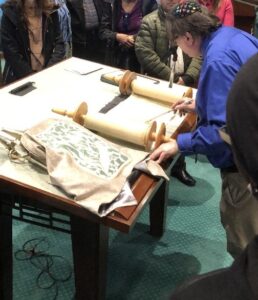 On December 7th, 25 Lilly colleagues embarked on an enlightening journey, continuing the legacy of meaningful events organized by AMECA and the Center for Interfaith Cooperation (CIC). The day unfolded with an insightful tour of the synagogue, featuring an open Q&A session about the Jewish faith, expertly led by the knowledgeable George Kelley, the Education Director.
On December 7th, 25 Lilly colleagues embarked on an enlightening journey, continuing the legacy of meaningful events organized by AMECA and the Center for Interfaith Cooperation (CIC). The day unfolded with an insightful tour of the synagogue, featuring an open Q&A session about the Jewish faith, expertly led by the knowledgeable George Kelley, the Education Director.
George passionately shared insights into the Jewish faith tradition, unveiling the sacred Torah, their holy book. The interactive session allowed participants to ask questions, fostering a deeper connection and understanding. This experience proved invaluable in creating a deeper appreciation of the Jewish Faith.
Such moments are not just about visiting sacred places; they are transformative learning opportunities. AMECA remains dedicated to fostering inclusivity, and we are excited to share more details about our 2024 programs soon. Stay tuned!
Heartfelt thanks to the curious participants who dedicated their time to this enriching experience, and our sincerest gratitude to Prashant Naik, Uniqah Muzaffar, and the entire CIC team for their invaluable support in organizing this event.
Embracing Diversity: AMECA Scared Places Tour at Masjid Al-Fajr
On Thursday, November 9th, 30 enthusiastic participants from Lilly embarked on the Sacred Places Tour at Masjid Al-Fajr, a meaningful event organized by AMECA and the CIC (Center for Interfaith Cooperation). The mission was clear: to embrace the religious significance of this sacred space and deepen our understanding of faith across cultures.
 The day unfolded with enlightening activities, including an open Q&A session about Islam, expertly answered by Imam Ahmed Alamine. A group discussion and an immersive tour of Masjid Al-Fajr followed, culminating in the observance of the Asar
The day unfolded with enlightening activities, including an open Q&A session about Islam, expertly answered by Imam Ahmed Alamine. A group discussion and an immersive tour of Masjid Al-Fajr followed, culminating in the observance of the Asar
prayer—a poignant moment of spiritual connection for all participants. “Understanding the religious accommodations employees may have been essential for creating an inclusive environment,” shared an HR colleague who participated in the event.
Bringing your whole self to the workplace is a cornerstone of our values, and events like these contribute to a culture of empathy and understanding. AMECA remains committed to fostering inclusivity, and we’re thrilled to announce our next Sacred Places tour on December 7th, where we’ll visit “Congregation Beth-El Zedeck”.
Continuous engagement in such events not only strengthens our internal bonds but also contributes to a more inclusive workplace. From cultural celebrations to dialogues promoting understanding, AMECA is dedicated to creating an environment where every voice is heard and valued.
Welcome to the first installation of "embracing the world's faiths in Indianapolis"
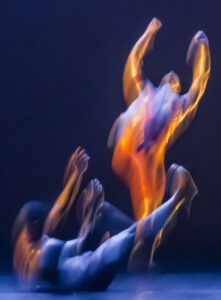 “Embracing the World’s Faiths in Indianapolis” is a blog written by local author and photographer, Freddie Kelvin. In it, you will read Freddie’s experiences in visiting local sacred spaces and speaking with members who practice that faith tradition.
“Embracing the World’s Faiths in Indianapolis” is a blog written by local author and photographer, Freddie Kelvin. In it, you will read Freddie’s experiences in visiting local sacred spaces and speaking with members who practice that faith tradition.
The foundations of the world’s faiths and religions were laid when ancient peoples searched for a meaning to their lives. They were witnesses to unseen forces that were outside of their control such as floods, earthquakes, and unexpected illnesses. Understandably, they wondered what caused these circumstances. With the passage of time, the answers came in stories that were passed between families and communities. These stories invoked powerful beings who had created the world a long time, beings that created fire, became heavenly bodies in the sky, and punished humans for showing a lack of respect. As a result, stories about the desires and requirements of these beings – who eventually became gods – began to shape human behavior. In this way, ancient beliefs, faiths, and religions gained widespread traction. Many of these, and particularly those of Egyptian, Greek, and Roman mythology, continue to influence Western culture today.
*Picture to the right – “Looking Skyward” a photograph of two dancers from Dance Kaleidoscope taken by photographer Freddie Kelvin*
Humans are primed to believe in the existence of a world beyond their own from a very early age. This belief explains our purpose, soothes our fear of death, and sets parameters for moral behavior. Many of the world’s religions are connected to something eternal. They have structured belief systems, invoke certain actions of its adherents, and address the great uncertainties of human behavior. Major issues such as the meaning of life and the nature of the universe, as well as questions as to what causes suffering and what happens after death, are often addressed.
In describing faiths and religions, we should all be respectful and as accurate and neutral as possible in our descriptions. Whereas the facts matter, it is perhaps even more valuable to focus upon their ideas and values so that we understand their meaning. In order to do this, we must be prepared to listen, and to listen carefully. The assumption that any one religion is superior to others carries with it the potential for unwanted and even dangerous consequences. As Arnold Toynbee observed; “Who knows enough to say with confidence whether one religion has been greater than all others?”
The old story about the blind men and the elephant is pertinent; a group of blind men come across an elephant and start touching it in order to understand its shape and size. One says that the elephant is like an immovable, textured wall, another says it is like a smooth, hardened pipe, and yet another declares it must look like a sturdy pillar. Each man is convinced that he is right. As a result, they start to argue about the elephant’s true nature. The men, of course, are all correct but each has only understood one part of the creature. This story raises questions about the world’s faiths and religions such as: “Does each of them only represent a part of the whole?”
The story also leads us to understand that the world’s religions and faiths are often interconnected. For example, Buddhism separated itself from Hinduism and Jainism developed in India around the same time. Christianity began as a Jewish sect, and Shia Islam gave rise to the Baha’i faith. Despite the trunk and tail of the elephant being part of the same animal, they have very different functions and forms. The same could perhaps be said for many of the world’s faiths and religions.
Differences between major faiths and religions have often had major consequences. Throughout history, those who refuse to follow a particular faith have too often been regarded by its adherents as less than human and in need of salvation. Religion is about identity, and identity excludes. For every “we” there is a “them” and these people are not like “us.” The answer, though, is not to resort to coercion, violence and even slaughter but rather to adopt interfaith initiatives based on mutual respect and understanding. That is why the Center for Interfaith Cooperation is so important in our lives.
In the forthcoming months of this calendar year, this blog will attempt to objectively define the principles and practices of the world’s major faiths and religions. We all need to have an understanding of these different belief systems so that the world’s inhabitants can live in relative harmony rather than in discord. Indeed, that harmony will be necessary if the human race – as we know it – is to survive intact.
Freddie Kelvin, Author of “Urban Nomad”
www.engagingauthor.com
CIC Intern, Stasia Raebel, Reflects on Her Time with CIC

Working with the Center for Interfaith Cooperation has been an incredibly meaningful experience. I was involved in many events that brought our community together. From sharing food with others from various backgrounds, sharing prayers from different faith paths, and coming together to hear music and watch diverse dances from multiple traditions, this experience allowed me to collaborate with new people and help bridge connections across several faiths. The Festival of Faiths, hosted in downtown Indianapolis every September, brought over 50 different faith traditions from central Indiana together for a celebration. This was a great start to my internship, and I enjoyed speaking with people from faiths that I had little knowledge about before this experience. This opportunity definitely helped me grow my religious literacy.
In addition, I had the wonderful opportunity to participate in Sacred Space tours. Through this, I would go to various places of worship in the Indianapolis community. Each faith welcomed us into their space with open arms, and it was a great educational opportunity to learn more about their beliefs and how they practice their religions. Some of these visits also included sharing a meal and diving into their faith celebrations, such as a Diwali celebration with the Hindu Temple of Central Indiana. These experiences widened my perspectives and made me eager to interact with and learn about more faith traditions in the future. It was also incredibly powerful to hear the youth perspectives through our Emerging Interfaith Leaders Dialogues. These were run upon the completion of each of our tours. Learning about other faith traditions from our own is crucial to grow empathy and become better educated citizens within our communities.
As part of my internship, I got to learn more about how non-for-profit organizations function. Seeing the behind the scenes of the grant proposals and administrative tasks was incredibly useful to learn, and this also gave me an even greater appreciation for non-profits and the challenging work they do to help our communities. Overall, I highly enjoyed my experience working with the CIC. I know that I will take the things I learned through this experience with me for the rest of my life.
Hanukkah 2023
A reflection of Hanukkah by CIC board member, Alan Bercovitz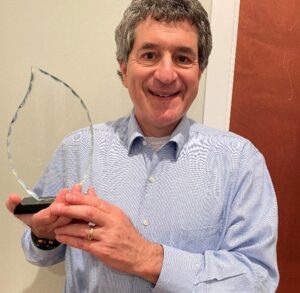
Jewish people world-wide celebrate Hanukkah each year by sharing the story and traditions of this holiday. Hanukkah is an eight-day
holiday that begins on the 25th day of the month of Kislev and ends on the 2nd day of the month of Tevet (on the Hebrew calendar, which
is now in the year 5784). This corresponds to our calendar year of 2023, with Hanukkah beginning at sundown on December 7th and
ending at sundown on December 15th.
The story of Hanukkah dates back over 2000 years, when Jewish people lived in a land called Judea (now modern-day Israel). The center
of their worship was the Great Temple in the city of Jerusalem, and in that Temple was the great menorah. The light of the menorah
burned day and night and was a brilliant symbol of holiness. King Antiochus ruled the land of Judea. He demanded the Jewish people
to abandon their religion and worship his god, Zeus. When the Jewish people refused, Antiochus sent his soldiers into the Temple, where
they destroyed the holy books and desecrated holy objects, including the precious menorah. Placing all their trust in God, and with great courage, a small band of Jewish people, led by Judah Maccabee, began to fight with the thousands of soldiers and horsemen of the King’s
army, and they defeated this much larger army, driving them out of Jerusalem. This unbelievable military victory is the first of two miracles
of Hanukkah. Although now free of oppression, the Jewish people had before them the great task of repairing the damage to the Holy Temple. The Temple was cleaned thoroughly, the altar was rebuilt, and a new menorah was placed. It was time to re-dedicate the Temple to God (Hanukkah means “dedication”). When it came time to re-light the great menorah, only one small jar of oil was found, enough for just one night. It would take 8 days of travel to obtain more. It was decided to light the menorah anyway, and the next day, to everyone’s amazement, the menorah was miraculously still lit. For 8 days the oil burned, until a new supply of oil arrived. This is the second miracle of Hanukkah. Seeing this as a sign of God, Judah Maccabee declared, “Let these events be celebrated with mirth and gladness for all time to come.”
And that is exactly what Jewish people do every year all around the world. With prayers of thanksgiving, we celebrate the victory God gave to those who believed in Him. We light Hanukkah candles at sundown on each of the eight days from a special candle called the shamash (“assistant”), adding a candle each day, so that a full menorah of 9 candles (8 plus the shamash) burns brightly on the last day.
May the lights of this season shine brightly on us all.
Alan Bercovitz MD FAAFP
Local Faith Leaders Gather for Tree Planting, Show of Unity
Center for Interfaith Cooperation and Keep Indianapolis Beautiful celebrate “Giving Treesday” with
interfaith gathering and tree planting at Lutheran Child and Family Services
INDIANAPOLIS – This afternoon, the Center for Interfaith Cooperation and Keep Indianapolis Beautiful (KIB) partnered to host “Giving Treesday” at Lutheran Child and Family Services (1525 N Ritter Ave, Indianapolis, IN 46219). As part of the Giving Tuesday movement, the gathering provided an
intentional space for faith-based communities and local residents to connect, reflect, and take lasting action by adding to the urban tree canopy.
The event included remarks from Center for Interfaith Cooperation Executive Director Charlie Wiles, Imam Ahmed Alamine of the Indianapolis Muslim Community Association, Rabbi Jordana Chernow-Reader of the Indianapolis Hebrew Congregation, Father
Rick Ginther of the Catholic Archdiocese Office of Ecumenism & Interreligious Affairs, and Susmita Singh of Hindu Swayamsevak Sangh.
“Center for Interfaith Cooperation is enthusiastic to partner with Keep Indianapolis Beautiful on an interfaith tree planting to help heal our earth and our shared humanity,” said Charlie Wiles, Executive Director of Center for Interfaith Cooperation. “I believe that prayer can be a good intention that translates into action. Planting trees, together, demonstrates our determination for a better environment, cleaner air, shade, and beauty that will benefit future generations.”
“For almost 50 years, Keep Indianapolis Beautiful has worked with people from all walks of life to make the city a better place for everyone. Many faith traditions share a common moral obligation to care for the world around us, and we look forward to joining hands to help people and nature thrive,” said Jeremy Kranowitz, President and CEO of Keep Indianapolis Beautiful.
The event marks the final tree planting of KIB’s project season. This year, Keep Indianapolis Beautiful has planted over 3,000 trees throughout Marion County. The trees planted during the event will have an impact for generations to come, including cleaner air, carbon mitigation, and stormwater retention.
Giving Treesday is being held as part of Giving Tuesday, which was created in 2012 with a simple goal: create a day that encourages people to do good. Since then, it has grown into a year-round global movement that inspires hundreds of millions of people to give, collaborate, and celebrate generosity.
Press Release Provided by Keep Indiana Beautiful
Meet IEC Member, Rashida Abdulhaqq
IEC Member Profile: Sister Rashidah
“I love dealing with the dirt,” says Rashidah Abdulhaqq, a CIC Interfaith Enrichment Corps member stationed
at Touba Gardens. “Dirt is good for you,” she says from experience. Her endearment to soil rings true for a
experience. Her endearment to soil rings true for a
woman who’s raised many children, grown a lot of food, and created community wherever she’s gone in her 73 years.
She was just a girl when her family migrated from Plumerville, Arkansas to Cleveland, Ohio in the 1950s to seek work in the auto industry. When they came, they brought with them a peach stone from her grandfather’s Arkansas orchard. “After seven years, that tree gave the most beautiful peaches in Cleveland,” she remembers. Her grandfather had 40 acres where he grew peaches, apples and pears. On summer visits down south,
Rashidah and cousins would wash and peel the fruits before they got laid out to dry on the house’s hot tin roof. “People came from miles around to buy that dried fruit,” she says.
In Cleveland, young Rashidah had her own garden, planted with tomatoes, zucchini, green beans, at Miles Standish Elementary which had an agriculture education program. Years later (2013-2022), Rashidah would
work for the U.S. Dept. of Agriculture and the Federation of Southern Cooperatives/Land Assistance Fund to get dozens of hoop houses/high tunnels built in Cleveland, to extend the growing season and encourage food sovereignty.
“That was the topic of my capstone project for my masters degree,” she says: “the effect of high tunnel hothouses in District 11.” Rashidah got her M.A. in food sustainability in 2018 from Green Mountain College, after earning her B.A. from an online adult learning program in 2012.
Rashidah has worn lots of other hats, too: as a member of the Cleveland School Board (1998-2011), as a member of Cleveland’s Hunger Network, always as a connector to resources. “School supplies, bread, clothes, copies of birth certificate: I’ve helped track it down if that’s what needed doing.” She adds with a smile: “I enjoyed myself.” She’s also met a Tanzanian ambassador, worked with Bill Clinton’s cabinet members… and she’s proud of sharing a birthday with Malcom X.
Throughout it all, Rashidah has played a lifelong role as mother. She had her first son at 20; today she is a matriarch of many Muslims. Three of her kids live in Indianapolis, and her grandkids and “great grands” live all over. One of her daughters is the director of a senior program that delivers meals to the elderly. Two of her grandsons were lost to gun violence. Hardship and loss are no match for Rashidah. Raised as a southern Baptist, she and her brother converted to Islam In the throes of the civil rights movement in 1968. “It made sense to me,” she says. “Islam is about common sense.”
Rashidah explains that in Islam, “There is one God and he has no partners…Islam teaches you to take nothing for granted, because too many other people depend on the same thing,” she explains. Islam teaches that the Earth is entrusted to Muslims by Allah; humans are accountable to Allah for betrayal of trust if they damage the Earth irreversibly.
So stewarding the land is embedded in Rashidah’s nature. In her work as an IEC member, Rashidah works with Touba Gardens founder and leader Mame Bousso to bring “garden therapy” to those who need it. The two met at Masjid Al Mumineen when Rashidah had moved back to Indianapolis in 2021 to be near her children. Rashidah and Mame Bousso are seeking to make the garden accessible to seniors, those with limited mobility, and those with dementia. “Because that’s good therapy!” says Rashidah. Touba also engages youth and families in growing their own food, for health and affordability, without chemicals.
Thyme is Rashidah’s favorite herb: it grows like a small tree, and it persists, even as the days shorten. Like a plant, Rashidah seeks the sun. “Don’t close yourself off,” she advises with gusto and grace. “Get out there and help people. Because the creator gave you a life: live it.”
Written by Anne Laker
Meet IEC Member, Nahla Ameen
IEC Member Profile: Nahla Ameen
Nahla Ameen — mother of six, and one of four founders of the Al Haqq Foundation Academy and Daycare — giggles often.
Her smiles are like a reflex for finding peace amid chaos, or finding the fun in work. No wonder she has this reflex. Nahla comes from a long line of caregivers and educators: her mother ran a home daycare. “I would take attendance with my stuffed animals,” she
recalls with one of her signature giggles.
Fast forward to 2017: Nahla was running her own home daycare when Imam Muhammad Ndiaye of the Al Haqq Foundation, a Muslim faith community on the city’s northwest side, asked her to come and do the creative work of setting up a school and daycare at the mosque.
“We started with four students,” Nahla says. “I had to set the daily schedule, select paint colors for the rooms, get the bookcases, everything. It was a beautiful thing to start!” she says. A school based on Islamic principles of faith, charity and prayer, she explains, is a comfort to parents who “want to leave their children with people who fear God first.”
After several years of nurturing the school and its students as a volunteer, Nahla left to pursue a job in the medical field. When the job ended without warning in summer 2023, she needed work badly. One of her fellow Academy founders, Sister MomJara, told her about the Center for Interfaith Cooperation’s Interfaith Enrichment Corps. Now she could be compensated for the same work she’d previously volunteered for.
“This is my life’s work,” says Nahla. “Connecting with people from different faiths, doing charity work, giving back!” She says being an IEC member reminds her of an image of a circle of hands of different colors, joined together in purpose. She’s so far enjoyed learning about meditation, meeting a practicing pagan for the first time, attending an interfaith service at Lucas Oil Stadium, and hearing about the projects of her fellow IEC members — while deepening her own faith.
Born in Lansing, Michigan to parents who converted to Islam in college, Nahla finds that Islam gives her “a blueprint for how to live my life: how to eat, pray, and worship.” As a young adult, she went through a time of exploring other religions. “It was Islam that answered all my questions.” It guided her in her role as mother to Yusuf (25), Hasanah (23), Yaqeen (16), Nouri (12), Nasir (9), and Aamir (3).
During the present time of a heart-wrenching war between Israel and Hamas, Nahla calls on her faith when explaining the conflict to her younger children. “It’s true, babies are dying,” she admits to them. “There is nothing to do but pray for now. We’re on the side of a cease fire. And we believe Allah will not take something from you without giving you better,” she says. Despite the fearful cultural climate, Nahla does not want to raise children to be afraid of the world. “I want them to develop their own opinions, with knowledge.”
Such is the purpose of any good school. Today, the Al Haqq Foundation Academy and Daycare that she co-founded serves 84 youth. At the hour I visited, one class was preparing for wudu, the ritual of cleaning one’s face, arms, head, and feet before prayer. Another class was learning to write in an Arabic language. Yet another was away on a field trip to The Children’s Museum.
“The school has come so far,” says Nahla with pride. There are now 11 teachers. “I used to know every student! Now there are so many that I don’t.” Her son Nasir attends the school and her son Aamir attends daycare. Nahla works alongside her colleague, Sister MomJara (“we are bonded as soul sisters,” says Nahla. “We share the same birthday, August 25”), solving problems and keeping everything moving at this unique school of knowledge and human development.
Nahla Ameen found her calling long ago: guiding young minds with care and compassion.
Written by: Anne Laker
Butler Intern, Stasia, reflects on her experience at the Indianapolis Prayer Breakfast
 The 2023 Indianapolis Prayer Breakfast was on October 3rd in the Indiana Roof Ballroom. This event gathered a diverse group of Christians from central Indiana. The Center for Interfaith Cooperation was a Bronze sponsor for this event, and as an intern with the CIC I had the opportunity to attend it.
The 2023 Indianapolis Prayer Breakfast was on October 3rd in the Indiana Roof Ballroom. This event gathered a diverse group of Christians from central Indiana. The Center for Interfaith Cooperation was a Bronze sponsor for this event, and as an intern with the CIC I had the opportunity to attend it.
The event began by giving an honor to a local ministry who reflected the messages in the passage Isaiah 58.
Many Christians believe that this passage outlines what true prayer and fasting are. The event donated one dollar from every ticket sold to this local ministry and allowed participants at the event to donate more if they felt inclined to. The event next presented several prayers toward the betterment of Indianapolis. Whether this was
for the service workers, the veterans, the youth, first-responders, and those employed or looking for employment, the prayers included many dimensions of the Indianapolis community. Participants who were directly impacted or involved with each prayer were asked to stand. These prayers were done as a thank you, a call for guidance, and
a hope for peace. It would be nice to include more of an interfaith perspective within these prayers in the future. This could be done through an acknowledgement of our neighbors in Indianapolis who have different faiths
outside of Christianity or by including a prayer presented by someone who identifies with a different faith tradition than Christianity.
This year’s keynote speaker was Pete Shimer, the Chief Operating Officer of Deloitte. Deloitte is one of the largest professional services organizations in the United States. He shared the impact God had on his life and how his faith has become a vital part of his work-life. He was a talented and eloquent speaker, and it was interesting to hear his perspective. He described how his upbringing was one without religion and how he used to consider himself a self-reliant person when it comes to thinking of the future. He said that he never really thought about what happens after death until his junior year of high school when his older brother was in a car crash that unfortunately caused the ending of his girlfriend’s life. He explained how this new perspective sparked a growth in his spiritual path.
He also discussed how his parents taught him the importance of service from a young age. After an international mission trip, he and his wife looked for ways to give back to their home community. They now focus primarily on service for youth, athletics, and education. Shimer, a former basketball player from the University of Washington, discussed how sports set people up with skills that can be transferred into regular life. Sport is often thought of as a medium for community building, so it was fascinating to hear that this also has the potential for religious learning. It would be interesting to hear more about this perspective and better understand how he coaches sports through a faith-based lens.
Additionally, a crucial aspect of his speech was when he described the book Love Your Enemies by Arthur C. Brooks. Here he discussed how we need to learn to disagree. Many have a tendency to wait for a pause in conversation to interject our ideas and prove that we are right instead of actually listening to what others have to say. Shimer also stated how people do things in the name of Jesus even when it doesn’t necessarily align with what Jesus believed in. This can especially be seen through America’s current political landscape. He further described how we have become increasingly polarized. The topics discussed in this book and Shimer’s speech are important to understand. Learning how to listen to different perspectives can help us grow into a stronger interfaith community as well as de-escalate our extreme political atmosphere. This was a great lesson that everyone can reflect on and work toward incorporating into our personal lives. It took humility and great empathy for Shimer to be able to recognize the importance of these messages.
In the future, the Prayer Breakfast could work toward being more inclusive of all faiths and perspectives. The Indianapolis Prayer Breakfast notes on their website that this event’s purpose is to gather Christians who believe in the power of prayer to change the world. If this organization wants to focus solely on Christianity, it would be more accurate if they renamed the event to the Indianapolis Christian Prayer Breakfast, as the name can be misleading. It would also be a great step for inclusion, if Indianapolis hosted an Interfaith Prayer Breakfast, especially if the group wants to keep the original prayer breakfast to just Christian faiths. Overall, the keynote speaker was compelling, and this event was effective in bringing a large group together to pray for the betterment of the Indianapolis community.
Written by: Stasia Raebel
Meet IEC Member, Talha Kahf
 Twenty-year-old Talha Kahf has zeal and skill for assisting people in need. He is also a thoughtful ambassador for the Muslim faith. These qualities make him an ideal member of the Interfaith Enrichment Corps (IEC) AmeriCorps Program, organized by CIC.
Twenty-year-old Talha Kahf has zeal and skill for assisting people in need. He is also a thoughtful ambassador for the Muslim faith. These qualities make him an ideal member of the Interfaith Enrichment Corps (IEC) AmeriCorps Program, organized by CIC.
Born to parents of Syrian heritage in California and raised in the Muslim faith, Talha and his family moved to Indiana in 2020. He started his IEC year of service in September 2023 at Masjid Al Mumineen, an active mosque led by Imam Ismail Abdul-Aleem on the city’s near northeast side in the Avondale Meadows neighborhood.
A social work student at IUPUI, Talha’s work at Al Mumineen includes assisting with the food pantry; providing American Sign Language (ASL) interpretation at jumu’ah (the special noon prayer service on Friday); keeping up with the mosque’s IT and organizational needs; prepping space for the first Muslim-led community development corporation to move in to the mosque; and staffing Straight Path, a reentry support group program.
Talha is working to be a resource for health within his faith community, as part of the Strengthening Healthy Support Networks in Minoritized Communities project, funded by a three-year grant to CIC from IU Health’s Community Impact Investment Fund.
An analysis of the health needs of the Al Mumineen community by its leaders showed that stress relief, healthy food access, and support for re-entry into the community are high priorities. Talha works in all three of these areas.
Helping people re-enter society after a prison term is important work at Al Mumineen, for Talha, and for the people it serves. “The Straight Path group has been going on for more than a decade,” says Talha. “It’s the only one in Indianapolis founded and run by people who were formerly incarcerated, and the only one that is Islam-based.” Talha says that Straight Path provides moral and philosophical support while offering care packages and job placement help to those newly released. Given the number of people who convert to Islam while in prison, Straight Path also hopes to someday start a Muslim-specific transitional housing program, much like the Wheeler Mission’s Christian-based services.
Meanwhile, Al Mumineen provides food to the hungry through Lut’s Pantry, every fourth Saturday of the month. Lut, Talha explains, was a prophet and nephew of Abraham. Lut’s Pantry distributes fresh seasonal vegetables, canned foods and home-cooked meals as well.
Talha also brings his own special skills, like ASL, to IEC. “I started learning sign language at 11 just because I thought it was a really cool language,” he says. He’s now minoring in it at IUPUI and is interpreting jumʿah at each Friday at Al Mumineen. “Members of the deaf community have shown up because they know I’m here.”
As an IEC member, Talha works to strengthen Al Mumineen’s own capacity to improve the social determinants of health for its community. One of his passions is working to prevent domestic violence. He recently completed an internship with the Indiana Coalition against Domestic Violence. “It would be a dream job to work there in the future,” he says, noting his passion for civic engagement and public policy advocacy, a key domestic violence prevention tool.
In October 2023, a militant Islamic group attacked Israel, after decades of oppression. As people around the world witness this tragic conflict in the Middle East, Talha, who has been to Palestine and has seen the walls built to surround Muslims, has many thoughts including this one: “There are people on both sides that do not condone the violence.”
In America, organizations like CIC work to help members of all faiths receive respect in a diverse society. Next up: Talha and will be assisting with a health fair planned for December 13 at CIC. There is so much good work to be done by Talha Kahf, an Emerging Interfaith Leader in his community.
Written by: Anne Laker
CIC responds to violence in the middle east
We, the board and staff members of Center for Interfaith Cooperation (CIC), stand in solidarity as we grieve and continue to pray for the
victims of violence in Israel and Palestine. We recognize the profound impact this has on our local community. We ask that people of good faith affirm the dignity inherent in every human being, and we call on leaders, in our community and throughout the world, to exercise restraint and to serve as an example for others.
CIC Board Chair, Imam Ahmed Alamine, says that he is “encouraged by the growing relations between the Muslim and Jewish community here in Indianapolis”. And he is “inspired by positive steps that are being taken to bring young people of different faith backgrounds together for better understanding”.
CIC encourages each of us to move beyond a comfort zone to build empathy for people who see and experience things differently and to reaffirm the commitment to work for a better future.
Reflections from Parliament of the World’s Religions 2023
On August 17th, a group of CIC delegates comprising of staff, board, and Interfaith Enrichment Corps members rented a passenger van and headed to Chicago for 2 days to attend the Parliament of the World’s Religions. We were a small group in a setting of over 7,000 attendees there to experience presentations, exhibitors, and being in the presence of other like-minded people dedicated to the interfaith movement. Here are a few of our most memorable take-aways from the event.
 Connor Bomar, Interfaith Enrichment Corps member
Connor Bomar, Interfaith Enrichment Corps member
I went to the Parliament a day early for one specific panel event titled “Sacramental Plants and Fungi: Historical and Scientific Insights for the Religious Life”. This panel consisted of Elaine Pagels (a revered scholar of religion), Jaime Clark-Soles (a Baptist minister and participant in a recent study), Rev. Mike Young, Father Richard Rohr (a beloved author, speaker, and Franciscan priest), and Robert (Bob) Jesse (a renowned researcher at the Johns Hopkins Center for Psychedelic and Consciousness Research). The presentation delved into the millennia-old use of entheogenic plant medicines in spiritual practices and recent scientific studies, showcasing their potential in inducing profound, spiritually significant experiences and lasting, positive psychological affects. The findings from the1962 Marsh Chapel experiment (of which Mike Young was a subject) and a recent Johns Hopkins and NYU study were discussed, emphasizing their relevance to historical and future religious and psychiatric practices.
The next evening, I had the privilege of having a conversation with Bob Jesse at the hotel restaurant. We discussed the research, its potential for healing, and everything in between. This subject holds a special place in my heart, and in the heart of many people that I hold dear. I have been following the research for years, devouring books on the history of sacramental plants and fungi, and I’ve watched as they’ve positively transformed so many people. The potential for these medicines to change our relationship to ourselves, to nature, and to alter our dependence on pharmaceutical intervention is exciting and promising.
These are moments that I will never forget.
 Charlie Wiles, Center for Interfaith Cooperation Executive Director
Charlie Wiles, Center for Interfaith Cooperation Executive Director
Traveling to Chicago with friends and colleagues from CIC to witness the Parliament of the World’s Religions was an unforgettable experience. The conversations as we traveled together were deep and enriching. Each of the workshops, panel discussions, and exhibit booths I visited were insightful and educational. It was truly inspiring to see people from all over the world gathered to share and learn about the beauty and compassion brought forward by our diverse religious communities. The langar lunches provided by the Sikh community brought out a spirit of love and generosity. The theme of this Parliament was Defending Religious Freedom, and it was a historical moment to witness Reverend Jesse Jackson receive a lifetime achievement award for his contributions to civil rights and equality. To the right is a photo of Reverend Jackson with his daughter and Congressman Bobby Rush.
 Josih Hostetler, Center for Interfaith Cooperation Program Director
Josih Hostetler, Center for Interfaith Cooperation Program Director
On Friday I was able to connect with the Parliament’s Call to Conscience by joining with the beautiful creation that exists within and around us. I took a stroll by Lake Michigan and then took the Metra to the morning Plenary where sounds from the drum circle filled the hall. I heard the interfaith call for creation care from Native American Spiritual leaders from throughout the Americas and will put this call into action!
 Jennifer Neer, Center for Interfaith Cooperation Director of Development and Marketing
Jennifer Neer, Center for Interfaith Cooperation Director of Development and Marketing
One of the most memorable moments for me was stumbling upon a Pagan ceremony on Friday morning on
the outer west patio of the convention center. It was a beautiful morning with the sun still rising over Lake Michigan sitting in the distance but close enough to smell it. There we people of all faiths participating in chants, songs, and a celebration of Mother Earth. While my personal thought is that Pagans have a certain stereotype, it was apparent that everyone there was for one purpose, regardless of their faiths, to thank
the earth for all it provides and to remind ourselves that we need to continue to take care of it and
each other. It brought me joy. It brought me peace. And it brought me a better understanding of how we
are all on this one planet together.
 Dr. Joni Clark, Interfaith Enrichment Corps member
Dr. Joni Clark, Interfaith Enrichment Corps member
This lovely sister invited me to take a tour of the Muslim Community Center. In preparation for the tour, she showed me how to wrap a hijab. It wasn’t mandatory for the tour, but I wanted to get a sense of what some of my female family and friends experience in worship and everyday life.
Posted: 9/20/2023
High Holy Days - A Reflection by Alan Bercovitz
 In the Jewish Faith, we are about to begin the 10 day period known as Yamin Noraim, the Days of Awe, more commonly known as the High Holy Days. For centuries, Jewish people have gathered together as a community to stop and think about the year past and the year ahead. This year, Rosh Hashanah begins at sundown on September 15th, corresponding to the 1st day of Tishrei in the year 5784 on the Hebrew calendar, and ends at sundown on September 17th; Yom Kippur begins at sundown on September 24th (the 10th of Tishrei) and ends at sundown on September 25th.
In the Jewish Faith, we are about to begin the 10 day period known as Yamin Noraim, the Days of Awe, more commonly known as the High Holy Days. For centuries, Jewish people have gathered together as a community to stop and think about the year past and the year ahead. This year, Rosh Hashanah begins at sundown on September 15th, corresponding to the 1st day of Tishrei in the year 5784 on the Hebrew calendar, and ends at sundown on September 17th; Yom Kippur begins at sundown on September 24th (the 10th of Tishrei) and ends at sundown on September 25th.
Rosh Hashanah, “The Head of the Year,” is a gift of time and an opportunity to learn and grow. It is a happy time as we welcome the New Year, but it is also a serious time as we think about ourselves, what we have done in the past year, and how we may do better in the year ahead. We eat apples dipped in honey in the hope of a sweet New Year. In a dramatic and powerful part of the service, the Shofar, or ram’s horn, is blown to announce the New Year and awaken us in the intention to do better. We ask God for a happy and peaceful year, and we give thanks to God for all good things. God opens the Book of Life which contains all the things we have done in the past year, each of our lives comes before God, and God judges us for the coming year. The Book is kept open, and we each have the power to change our judgment through prayer, forgiveness, and good deeds (the Book is closed at the end of Yom Kippur). When the service concludes, we say “L’Shanah Tovah Tikatevu,” may you be written in the Book of Life for a good year.
Yom Kippur, “The Day of Atonement,” is the holiest day of the Jewish year. It is serious and holy, but not sad. After a festive meal, a fast is begun prior to the start of services. This fast allows more time to pray and helps us to know hunger. Kol Nidre, “all the vows,” the most beautiful service of the year, begins at sundown. We ask God for forgiveness. It is the only evening service when tallit (prayer shawls) are worn. The Torah are taken out, and the Kol Nidre prayer is chanted three times. An all day service follows the next day, as we pray a confession of sins, not only for our own sins, but for the sins of others, for things either done or not done. Yizkor, a memorial service, is the time to remember family and friends who have died. To honor their memory, we promise to give Tzedakah, or contributions, to help those in need. The Biblical story of Jonah is told during the service. Neilah, or “closing,” is the final part of the service, as the Book of Life is closed. The Shema is chanted to reaffirm our belief in God, and the Shofar is once again blown. After sundown, the long fast is broken.
As each of us looks at our individual lives during this period of introspection, may we all as well look at the vast world around us that continues to need our prayers.
Alan Bercovitz
Medical Director Emeritus, Joshua Max Simon Primary Care Center
Medical Director Seton Cove/Physician Liaison Mission Integration
Faculty, Family Medicine Residency Program
CIC responds to Greenwood police department's officers' action
Indianapolis, Indiana
August 26, 2023
Center for Interfaith Cooperation responds to Greenwood Police Department’s Officers’ Actions
The Center for Interfaith Cooperation’s board of directors and staff (CIC) is calling for Greenwood Police Department (GPD) to hold its officers to a higher standard and act in a manner that is respectful and equitable for all.
As an organization, CIC appreciates the diversity in gender, race, ethnicity, sexual orientation, nationality, disability, socioeconomic background, age, religious belief, and any other differences that have been used to divide people.
This call to action comes after the Indianapolis Star ran an article on August 23, 2023 (here) that uncovered a lawsuit in which an officer is suing GPD after being suspended from the department for using “vulgar, racist, and homophobic language in instant messages using department equipment.” Additionally, the article states that over 5,000 pages of messages were exchanged between staff members that expressed antisemitic, racist, and homophobic sentiments.
Charlie Wiles, CIC’s executive director states, “The number of messages sent between members of the Greenwood Police Department are deeply disturbing.”
The diversity of Greenwood’s residents continues to grow and includes people of different faiths, immigrants, refugees, and sexual identities and orientations. It is Greenwood Police Department’s responsibility to ensure that its officers remain vigilant in the cultural training of its officers and hold them to a higher standard and act in a manner that is respectful and equitable for all.
Discrimination of any kind is unacceptable.
###
A printable version of this statement can be found here.
Burma NOW: artist spotlight: Maw Reh
 Muscular Angel: Karenni Artist Maw Reh
Muscular Angel: Karenni Artist Maw Reh
By Anne Laker
Twenty-five-year-old Maw Reh is a Karenni artist in America, against all odds. One of the first sketches he ever did, at the Arizona middle school where he had just arrived from a refugee camp, was a muscular angel. His drawing skill caught the attention of his teachers. Now, Maw Reh is one of five artists featured in the exhibition Burma Now, presented by Hope for Tomorrow and the Center for Interfaith Cooperation.
Maw Reh is Karenni, one of many ethnic groups in Burma, a country neighbored by China, Laos, India, and Thailand. Burma is a country of people crushed by a continuous civil war and an ongoing humanitarian crisis. Under the military dictatorship, churches, schools and villages are bombed, burned, and set with landmines. In July 2023, the New York Times reported that the calculated attacks to intimidate civilians are only becoming more brutal.
Though Maw Reh is 100% Karenni, he was not born in Burma. He was born and grew up in a Karenni refugee camp bordering Thailand and Burma.
“My father had joined the resistance army and the government cracked down,” he says. “So we fled.” It was in the camp that he first saw people drawing. When he was 11, in 2008, the United Nations resettled his family in Arizona. Like many refugees, he remembers his first day at American school. “It was very nerve wracking,” he says. Art was a non-verbal refuge. After graduating from high school, Maw Reh won a full scholarship to Phoenix College and proudly earned an associate’s degree in fine art.
“Art serves as a speaking method for me to show the world and my own people what is going on,” he says. While refugees strive for good lives in America, the shadow of war never fades for someone born into it.
That is the reason for the art show, says Justin Thang, president and founder of Hope for Tomorrow: “To people in Central Indiana living in peace with the Burmese community, we want you to know: your neighbor’s home country is not safe, their families are still suffering.” A new generation of American-born Burmese, under pressure to assimilate, may be tempted to “forget” the war as it rages still.
Not Maw Reh. In 2021, he traveled back to visit the camp where he was born in Thailand. He found that with the politics of international aid and the Thai government’s new rules, the camps have gotten worse for the Karenni people, with poor education and a lack of clean water, food, and medical supplies. Remembering his own childhood experiences, he was moved to paint oil portraits of people there, documenting their humanity and resilience with dramatic color: a Karenni boy making himself a soccer ball of bamboo, a young Karenni woman in tribal dress leading her people toward hope.
This summer, Maw Reh spent several weeks at a retreat called Art Farm Iowa making the largest painting of his life: a pensive portrait of a Burmese (Karenni) woman adorned with feathers, shells and beads, looming with beauty. “My purpose with art is centered around my journey as a Karenni person and the promotion of our rich culture,” says Maw Reh.
The Indianapolis exhibition Burma Now of which Maw Reh’s work is a part is made possible by a grant from the IU Health Community Impact Investment Fund for a project conceived by Center for Interfaith Cooperation and IU’s Congregational Care Network called Strengthening Healthy Support Networks in Minoritized Communities. The idea is to increase health resources and health outcomes among immigrant groups.
The link between art and mental health, the way it moves people from isolation to connection, is part of the saving grace of bearing witness, for Maw Reh and many others. “I’ve been suffering from depression since high school,” he says. “Art serves as a base to feel relaxed and to find peace in my own world.” He pauses. “Right now, it is less about me … it is my goal to paint my culture and my people and what they are going through.”
Burma Now is on display through September 8, weekdays from 9 a.m. to 5 p.m. Please return and bring a friend.
Hope for tomorrow
 Imagine coming to a new country as a teenager due to religious persecution in your homeland. Imagine being given a new name, having to learn a new language, and being bullied. You would not want anyone to suffer the way you had. This is part of the story of Justin Thang, founder and executive director of Hope for Tomorrow, an organization devoted to empowering Burmese refugees toward a hopeful, successful future
Imagine coming to a new country as a teenager due to religious persecution in your homeland. Imagine being given a new name, having to learn a new language, and being bullied. You would not want anyone to suffer the way you had. This is part of the story of Justin Thang, founder and executive director of Hope for Tomorrow, an organization devoted to empowering Burmese refugees toward a hopeful, successful future
Hope for Tomorrow is one of CIC’s partners in the “Strengthening Healthy Support Networks in Minoritized Communities” project, funded by a grant from IU Health’s Community Impact Investment Fund. Through this grant, project partners will work to identify ways that members of the Burmese community can access mental health resources, smoking cessation resources, youth mentorship, and more. Although there is no word for “mental health” in the Burmese language, people universally need support.
At a visit last month to the Hope for Tomorrow offices on Indy’s south side, Justin and AmeriCorps member associate Van warmly greeted CIC staff and the project team. The many thriving plants in the office were a visual metaphor for the hope this organization engenders. Justin and Van shared their stories, reflected on their community’s needs, and described the chilling fact of a military war against citizens raging in Burma today, with bombings in Justin’s home state of Falam, in the Chin area of Burma.
We look forward to supporting Hope for Tomorrow with human and financial resources to help Burmese neighbors feel whole and healthy in their adopted Indianapolis home.
Written by: Anne Laker 5.12.2023
CIC Internship Reflection

The Center for Interfaith Cooperation is a local Indianapolis non-profit focused on improving the relationships between different faith groups and creating community between religious groups. The CIC hopes to improve the relationships between different religious communities through mutual exposure, thereby demonstrating the humanity common to all. Over the course of the fall semester, I had a chance to participate in these community building efforts and witness the role of interfaith within our modern world.
The work of the CIC challenged my beliefs of what our community is and who makes it up. On the board alone, some nine different faiths are represented, and even more exist within the Indianapolis community at large. On a personal level, it was a shock to see the religious and cultural diversity in a community I thought I was familiar with. Like many raised from the Midwest, I wasn’t exposed to much cultural or religious diversity growing up. I came to mistakenly assume that our communities lacked any significant cultural, ethnic, or religious diversity. The work of the CIC, through their events like the Festival of Faiths, the Interfaith Banquet, and community religious dialogues, demonstrates the incompleteness of that view: considerable diversity exists within our communities, and merely needs an opportunity for exposure. The CIC highlights and raises the profile of many faith communities that may not otherwise receive such exposure. Within Indianapolis alone, Hindus, Sikhs, Muslims, Jains, and Pagans all call the city their home. Similar diversity can be found in most cities across the country — even if our mainstream culture doesn’t highlight their role.
In a larger sense though, the work of the CIC captures the pluralistic ideal that we aspire to as a society. Far from idle talk about inclusivity and cultural diversity, the CIC activity facilitates tolerance, understanding, and empathy our society aspires for. By introducing people to unfamiliar religious, cultural, and ethnic traditions, they become more empathetic to those groups of people. In this way, a stranger becomes a friend.
Perhaps the greatest takeaway of my time at the CIC and my interfaith experiences is that it demonstrates the humanity in people who, on the surface, may appear dissimilar to yourself. The superficial distinctions of dress, custom, or cuisine can lead people to believe that others are unlike themselves; that nothing is shared in common, and perhaps the “other” isn’t fully human at all. But a simple introduction to someone who seems unlike yourself will illustrate the fiction of this idea; although people may dress differently, eat unique food, or practice a different set of rituals… They are still people. We have a chance to learn this firsthand when we come into contact with these people, providing an opportunity to change and challenge our beliefs. Without these encounters, our beliefs may unfairly calcify and become distorting caricatures of those around us.
Though there may still be ideological or political differences across lines of faith, we come to see the humanity in people of different faith backgrounds than our own — the first step to creating a truly interfaith community and facilitating cooperation amongst all people. The importance and value of pluralism and interfaith collaboration may be best described through a political analog: while Liberals and Conservatives may disagree, both recognize the right of the other to live within the larger community; both are equally endowed to citizenship in a shared national space. Interfaith engagement attempts to cultivate shared citizenship in a common social space — whether a Jain, a Pagan, a Christian, or a Sikh, everyone has a place in the modern world.
Written by Noah Giddings, CIC Fall 2022 Intern
Building wellness, building belonging: New IU Health-funded grant project serves Central Indiana faith communities
 Anne Laker, Laker Verbal
Anne Laker, Laker Verbal
1/18/2023
This week, it formed. A powerful new network for supporting the wellness resource needs of distinct cultural communities in Indianapolis.
At the Indiana Interchurch Center, with light pouring in through the stained glass windows of the Krannert Room, leaders from four communities gathered for the first time at the invitation of the Center for Interfaith Cooperation (CIC) and the IU Health Congregational Care Network (CCN):
- Masjid Al Mumineen (an eastside mosque serving Muslims from around the world)
- St. Monica’s (a Catholic parish on the northwest side with Spanish, French/West African, and English speakers)
- Hope for Tomorrow (a southside non-profit serving Burmese immigrants and refugees)
- the Grassroots Maternal Child Health program (facilitating systems change that improves maternal and child health outcomes in marginalized neighborhoods).
The rallying point for these diverse partners is a generous three-year Community Impact Investment Fund grant from IU Health for a project conceived by CIC and CCN with the long but accurate name of “Strengthening Healthy Support Networks in Minoritized Communities.” “Minoritized” communities may be abundant, rich, and well-established … but perhaps less visible or more isolated—and not by choice.
The project goal is to increase health resources and health outcomes in congregations with higher immigrant populations. And to grow trust and mutual interfaith understanding at the same time.
The project, and the meeting, kicked off with an ice breaker about what brings us joy. Rev. John P. McCaslin of St. Monica had been up late the night before, tending to the spiritual needs of a parishioner who had lost a loved one. But he arrived in time to share that he receives joy from his rescue cat, Magdalena (Maggie for short).
Another ice breaker question: what do we love most about our communities? For Julius Ali Mansa, board vice president at Masjid Al Mumineen, it is the international quality of the Islamic community. A North Central High School graduate and Hoosier native, Julius shared that he has lived in Morocco, Bahrain, and Saudi Arabia, and that wherever in the world Muslims gather, many languages are spoken.
But sometimes, cultural barriers prevent access to resources for health. CIC Program Director Josih Hostetler explained that, thanks to the grant, the four communities will host a CIC-sponsored AmeriCorps member drawn from that community who will connect the community with health services and help organize health fairs and community celebrations (while receiving training in religious literacy and non-profit administration). Communities will also receive monthly stipends to help support this work.
Shadreck Kamwendo, the Congregation Care Network manager at IU Health, shared the wonderful existing resource of CCN, which organizes volunteers from faith communities who stand ready to support patients with no one else to support their at-home recovery.
Justin Thang, founding director of Hope for Tomorrow, was overwhelmed with excitement to learn about these resources. His organization builds bridges between the Burmese and American communities, and empowers Burmese refugees with resources to achieve hopeful, successful futures. He spoke of his own grief as a newcomer to the U.S., as he struggled to complete his homework in a new language as an elementary school student. He spoke of the ongoing trauma of a violent civil war and military coup in Myanmar that weighs heavily on the minds of the local Burmese, and his community’s hesitation to step into the community at large here in Indiana.
Grief counseling, HIV testing, immunizations, substance abuse counseling, health care in general: depending on need, these are just a few of the resources that the “Strengthening Healthy Support Networks” project will bring to people who need them.
In turn, each community has assets to share. Everyone gathered completed an assessment of community strengths. What innovations, special places, cultural arts, leadership, or social capital does each community bring?
As Charlie Wiles, CIC executive director pointed out, the Indiana Interchurch Center has an art gallery. Imagine the feeling of belonging that could be created if the whole community were invited to explore, say, the art of the Burmese community.
Belonging and wellness. The most human of needs, to be served with humility and trust through this nascent and promising project. There is much goodness to come.

(L to R): Jennifer Neer (CIC), Ismail Abdul Aleem (Masjid Al Mumineen), Barb Bacon (St. Monica), Maria Pimentel-Gannon (St. Monica), Charlie Wiles (CIC), Julius Ali Mansa (Masjid Al Mumineen), Josih Hostetler (CIC), Tim Bush (St. Monica), Justin Thang (Hope for Tomorrow), Shadreck Kamwendo (CCN), Prof. Jack Turman (Fairbanks School of Public Health), David Love (CIC).
Not pictured: Rev. John McCaslin (St. Monica), Marcos Collado (Riley Health), Jay Foster (IU School of Medicine).
Center for Interfaith Cooperation Announces New Board Chair

Center for Interfaith Cooperation is excited to announce the election of new board chair, Imam Ahmed Alamine. Imam Alamine first joined the board of directors in 2019 as a leader at the Indiana Muslim Community Association, his interfaith work on the Indianapolis Metropolitan Police Department as the first Muslim Police Chaplain, Chaplain of the Marion County Sheriff’s Office, and his extensive non-profit work. The Imam is one of three board members of the Muslim faith. He will begin his duties as board chair in January 2023.
In addition to appointing Imam Alamine to the board, six additional board members were added to the already diverse board. Ernest Lifferth of the Church of Jesus Christ of Latter-Day Saints, Dr. Priya Menon of the Hindu Temple of Central Indiana, Rabbi Jordana Chernow-Reader of Indianapolis Hebrew Congregation, Ephraim Palmero III from the Seventh Day Adventists, Dr. Gregory Shufeldt of the University of Indianapolis, and Stephanie Mozee from Family Development Services.
Established in 2011, Center for Interfaith Cooperation has had over 120 religious and community representatives serve as leaders on their board of directors. Within those more than 120 leaders, at least nine (9) distinct faiths traditions have been represented along with dozens of distinct denominations. The religious diversity of CIC’s board of directors is only part of the work they do to fulfill their mission to provide a safe environment that provides resources and opportunities for service to increase religious literacy, build empathy between faiths, and facilitate interfaith encounters.
The Borders of Interfaith: A CIC Conversation with Pastor Danny Davis and Imam Mikal Saahir

If two communities share a border, how will the two groups interact? How ought people or organizations act as neighbors? How can neighbors avoid conflict and treat each other well? Must borders cause conflict or can proximity be a vehicle for community and collaboration?
Neighbors around the world struggle with these questions of conduct. Whether people share a cul de sac, a state line, or a national border, a shared space induces a shared relationship. Shared spaces make these relationships unique; neighbors have a relationship not by choice but by circumstance. Our relationships with our neighbors offer insight to all our relationships. More so than any other relationship, the relationships we have with our neighbors illuminate how we relate to ourselves.
Of all the boundaries in the world, borders separating religious groups have often been the most contentious. Since time immemorial, religious borders have been a cause of destructive and harmful dispute. Whether the Crusades of medieval history or contemporary conflicts like the status of Palestine or Kashmir, religious boundaries have a propensity for causing conflict. Within an ever-more interconnected world, however, we have a pressing need for conflict to give way to collaboration and for religion to act as a vehicle of unity rather than division. Religious leaders have a unique role in this project of interfaith collaboration and community building. As congregations look to their leaders, the leaders set the tone for the relationships across religious borders. Whether positive or negative, the relationships across religious boundaries are set by those at the pulpit. Collaboration between leaders of different faiths illustrates how interfaith cooperation is achievable.
In East Indianapolis, the leaders of the Nur-Allah Islamic Center and First United Church are proof positive of this idea, demonstrating how different religious communities can collaborate and cooperate. The relationship between Nur-Allah and First United is unique because of their proximity: the two houses of worship share a single plot of land. In a field, adjacent to a lively thoroughfare, sit the two religious communities. On one side of the plot, leaning towards the road in friendly invitation, sits the Nur-Allah Islamic Center. Across an imperceivable boundary and slightly recessed into the broad green field is the First United Church. No physical barrier separates the two places of worship; no fence, no gate, no difference in upkeep can distinguish the two plots of land. In every manner except the deed, the two houses of worship occupy the same campus.
During a visit to the shared campus earlier this fall, the leaders of the two communities only reinforced the sense of peaceful coexistence evident externally. Imam Mikal Saahir and Pastor Danny Davis capture the harmonious coexistence the shared campus seems to represent. Like the shared campus, the relationship between the two religious leaders also show no barriers: Imam Mikal Saahir and Pastor Danny Davis interact with obvious respect and mutual appreciation. Shared concern for the local community and similar life experiences of the two men (Pastor Davis’ father was an Indianapolis firefighter at the same time as Imam Saahir) gird their relationship as both individuals and men of God. An outside observer might contemplate the significance of their peaceful coexistence, but their relationship runs deeper than nominal differences of faith. Like the divide between the two places of worship, the divide between the two holy men is largely perceived. To a surprising degree, their religious backgrounds play a mostly limited role in their relationship. In fact, to the extent religion plays a role at all, it reinforces their relationship. Although both men share a common background, their piety forms another basis for collaboration: Imam Saahir and Pastor Davis perceive the role of faith within their relationship in a similar light.
In conversation with the two men, both stressed the emphasis Chrsitian and Islamic Theology place on neighborly virtue. “What I know from the study of scripture is that we are called to be neighbors… Love your God; love your neighbor”, were Pastor Davis’ thoughts. In a similar vein, Imam Saahir remarked: “The words of Muhammad say always be kind to your neighbor”. Later in conversation, the Imam recalled that Allah’s instruction on neighborship was so extensive that Muhammad believed he must put the neighbor into his inheritance. Far from impairing their relationship, their religious backgrounds have informed it.
Although both men would likely collaborate outside a religious context, their religious backgrounds inform and reinforce their collaboration and friendship. Despite drawing upon different religious traditions, their religious instruction acts as catalyst for neighborly cooperation rather than a challenge to it. For religious communities throughout Indiana, the United States, and the World, perhaps the relationship between Pastor Davis and Imam Saahir may serve as an example. Like the property line between First United and the Nur-Allah or the piety of Pastor Davis and Imam Saahir, oftentimes the borders which separate us are largely perceived.
Written by Noah Giddings, CIC Fall 2022 Intern
Core Statements
Center for Interfaith Cooperation is about words. Words that express our humanity and help to define our relationship to the divine through our relationship with one another across a beautifully diverse religious landscape.
Sacred texts and words of wisdom from all our faith traditions help to guide daily actions as well as inform thoughts about eternity.
Our goal in producing statements is not only to seek common language and understanding regarding particular events, but also to illuminate the places where we have honest differences. CIC’s mission is to build empathy for other positions while further defining and challenging our individual convictions.
We have never hesitated to stand in solidarity when any one of our faith communities is attacked. We all vigorously support an open pluralistic society where everyone feels free to worship as they choose or not to worship at all. Our challenges come when it when we approach social issues and the pursuit of equity in all we do. We pride ourselves in building trust across theological and ideological difference.
Below are more statements from CIC and community partners. We hope that you join the conversation and bring your voice to the ongoing conversation.
Recenter Indiana
Founding CIC Board Chair launches initiative to recenter Indiana politics
http://www.indycic.org/wp-content/uploads/2022/07/Recenter-IN.pdf

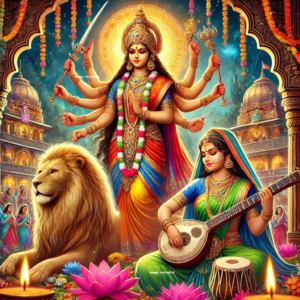 Jaya tvaṁ Devi chāmuṇḍe jaya bhūtārti-hāriṇi
Jaya tvaṁ Devi chāmuṇḍe jaya bhūtārti-hāriṇi